Publications
Eisape, Adebayo; Sun, Bohan; Li, Jing; Kang, Sung
Nanoporous Composite Sensors Book Chapter
In: pp. 85-109, 2022, ISBN: 978-3-030-81826-5.
@inbook{inbook,
title = {Nanoporous Composite Sensors},
author = {Adebayo Eisape and Bohan Sun and Jing Li and Sung Kang},
doi = {10.1007/978-3-030-81827-2_5},
isbn = {978-3-030-81826-5},
year = {2022},
date = {2022-01-01},
pages = {85-109},
keywords = {},
pubstate = {published},
tppubtype = {inbook}
}
Mallela, Deepthi P; Bose, Sanuja; Shallal, Christopher C; Goldsborough, Earl; Xun, Helen; Chen, Jonlin; Stonko, David P; Brandacher, Gerald; Sacks, Justin; Kang, Sung H; Hicks, Caitlin W
A systematic review of sutureless vascular anastomosis technologies Journal Article
In: Semin Vasc Surg, vol. 34, no. 4, pp. 247–259, 2021, ISSN: 1558-4518.
@article{pmid34911631,
title = {A systematic review of sutureless vascular anastomosis technologies},
author = {Deepthi P Mallela and Sanuja Bose and Christopher C Shallal and Earl Goldsborough and Helen Xun and Jonlin Chen and David P Stonko and Gerald Brandacher and Justin Sacks and Sung H Kang and Caitlin W Hicks},
doi = {10.1053/j.semvascsurg.2021.10.004},
issn = {1558-4518},
year = {2021},
date = {2021-12-01},
journal = {Semin Vasc Surg},
volume = {34},
number = {4},
pages = {247--259},
abstract = {Vascular anastomoses typically involve a handsewn technique requiring significant surgical training, expertise, and time. The aim of our systematic review was to identify and describe sutureless vascular anastomosis techniques. We performed a systematic review of all sutureless vascular anastomosis technologies published in MEDLINE, PubMed, Embase, CINAHL, Cochrane, Web of Science, and Scopus Library databases and a patent review using US Patent and Trade Office Application, US Patent and Trademark Office Patent, Google Patents, Lens, Patent Quality Through Artificial Intelligence, SureChEMBL, and E-Space Net. Data from inclusion studies and patents published between January 1, 1980 and July 15, 2021 were abstracted to describe their category, anastomosis type and configuration, study types, and advantages and disadvantages encountered with each technology. Two hundred eleven original studies and 475 patents describing sutureless vascular anastomosis technologies were identified. In the literature, stents/stent-grafts/grafts (n = 61), lasers (n = 53), and couplers (n = 27) were the predominant device categories. In the patent review, adhesive technologies (n = 103), stents/stent-grafts/grafts (n = 68), and mechanical connectors (n = 61) predominated. The majority of studies involved in vivo animal studies (n = 193); 32.2% (n = 68) of investigations involved human trials; and 17.9% (n = 85) of patent technologies were approved by the US Food and Drug Administration. The main advantages described for sutureless anastomosis technologies included faster procedure time and greater patency rates compared with handsewn anastomoses. The main disadvantages included reduced vessel compliance, stenosis, leakage, and device costs. The appeal of sutureless technology is substantiated by numerous animal trials, but their use in humans remains limited. This may be a reflection of strict regulatory criteria and/or vascular complications associated with currently available technologies.},
keywords = {},
pubstate = {published},
tppubtype = {article}
}
Aizenberg, Joanna; Aizenberg, Michael; Kang, Sung Hoon; Kim, Philseok; Wong, Tak Sing
Sanitation systems and components thereof having a slippery surface Miscellaneous
2021, (US Patent 11,118,067).
@misc{aizenberg2021sanitation,
title = {Sanitation systems and components thereof having a slippery surface},
author = {Joanna Aizenberg and Michael Aizenberg and Sung Hoon Kang and Philseok Kim and Tak Sing Wong},
url = {https://patents.google.com/patent/US11118067B2/en},
year = {2021},
date = {2021-09-01},
urldate = {2021-09-01},
publisher = {Google Patents},
note = {US Patent 11,118,067},
keywords = {},
pubstate = {published},
tppubtype = {misc}
}
West, James; Erturun, Ugur; Kang, Sung Hoon; Eisape, Adebayo
Flexible and hybrid energy harvesting device combining piezoelectric and electrostatic conversions Miscellaneous
2021, (US Patent App. 17/059,735).
@misc{west2021flexible,
title = {Flexible and hybrid energy harvesting device combining piezoelectric and electrostatic conversions},
author = {James West and Ugur Erturun and Sung Hoon Kang and Adebayo Eisape},
url = {https://patents.google.com/patent/US20210218350A1/en},
year = {2021},
date = {2021-07-01},
urldate = {2021-07-01},
publisher = {Google Patents},
note = {US Patent App. 17/059,735},
keywords = {},
pubstate = {published},
tppubtype = {misc}
}
Kang, Sung Hoon; Orrego, Santiago
Biomimetic self-adaptable systems Miscellaneous
2021, (US Patent App. 16/645,317).
@misc{kang2021biomimetic,
title = {Biomimetic self-adaptable systems},
author = {Sung Hoon Kang and Santiago Orrego},
url = {https://patentimages.storage.googleapis.com/85/fc/24/cc6cf503ef3a9c/US20210040678A1.pdf},
year = {2021},
date = {2021-02-01},
urldate = {2021-02-01},
publisher = {Google Patents},
note = {US Patent App. 16/645,317},
keywords = {},
pubstate = {published},
tppubtype = {misc}
}
Jeon, Seung-Yeol; Shen, Beijun; Traugutt, Nicholas A; Zhu, Zeyu; Fang, Lichen; Yakacki, Christopher M; Nguyen, Thao D; Kang, Sung Hoon
Synergistic Energy Absorption Mechanisms of Architected Liquid Crystal Elastomers Journal Article
In: arXiv preprint arXiv:2110.07461, 2021.
@article{jeon2021synergistic,
title = {Synergistic Energy Absorption Mechanisms of Architected Liquid Crystal Elastomers},
author = {Seung-Yeol Jeon and Beijun Shen and Nicholas A Traugutt and Zeyu Zhu and Lichen Fang and Christopher M Yakacki and Thao D Nguyen and Sung Hoon Kang},
url = {https://arxiv.org/abs/2110.07461},
year = {2021},
date = {2021-01-01},
urldate = {2021-01-01},
journal = {arXiv preprint arXiv:2110.07461},
keywords = {},
pubstate = {published},
tppubtype = {article}
}
Fang, Lichen; Yan, Yishu; Agarwal, Ojaswi; Seppala, Jonathan E; Migler, Kalman D; Nguyen, Thao D; Kang, Sung Hoon
Estimations of the effective Young’s modulus of specimens prepared by fused filament fabrication Journal Article
In: Additive Manufacturing, vol. 42, pp. 101983, 2021.
@article{fang2021estimations,
title = {Estimations of the effective Young's modulus of specimens prepared by fused filament fabrication},
author = {Lichen Fang and Yishu Yan and Ojaswi Agarwal and Jonathan E Seppala and Kalman D Migler and Thao D Nguyen and Sung Hoon Kang},
url = {https://www.sciencedirect.com/science/article/abs/pii/S2214860421001482},
year = {2021},
date = {2021-01-01},
urldate = {2021-01-01},
journal = {Additive Manufacturing},
volume = {42},
pages = {101983},
publisher = {Elsevier},
keywords = {},
pubstate = {published},
tppubtype = {article}
}
Xun, Helen; Clarke, Scott; Baker, Nusaiba; Shallal, Christopher; Lee, Erica; Fadavi, Darya; Wong, Alison; Brandacher, Gerald; Kang, Sung Hoon; Sacks, Justin M
Method, Material, and Machine: A Review for the Surgeon Using Three-Dimensional Printing for Accelerated Device Production Journal Article
In: Journal of the American College of Surgeons, vol. 232, no. 5, pp. 726–737, 2021.
@article{xun2021method,
title = {Method, Material, and Machine: A Review for the Surgeon Using Three-Dimensional Printing for Accelerated Device Production},
author = {Helen Xun and Scott Clarke and Nusaiba Baker and Christopher Shallal and Erica Lee and Darya Fadavi and Alison Wong and Gerald Brandacher and Sung Hoon Kang and Justin M Sacks},
url = {https://scholar.google.com/citations?view_op=view_citation&hl=en&user=RKlXTzoAAAAJ&sortby=pubdate&citation_for_view=RKlXTzoAAAAJ:ZuybSZzF8UAC#:~:text=Sung%20Hoon%20Kang-,Method%2C%20Material%2C%20and%20Machine%3A%20A%20Review%20for%20the%20Surgeon%20Using%20Three-Dimensional%20Printing%20for%20Accelerated%20Device%20Production,-Authors},
year = {2021},
date = {2021-01-01},
urldate = {2021-01-01},
journal = {Journal of the American College of Surgeons},
volume = {232},
number = {5},
pages = {726--737},
publisher = {Elsevier},
keywords = {},
pubstate = {published},
tppubtype = {article}
}
Omar, Mostafa; Sun, Bohan; Kang, Sung Hoon
Good reactions for low-power shape-memory microactuators Journal Article
In: Science Robotics, vol. 6, no. 52, pp. eabh1560, 2021.
@article{omar2021good,
title = {Good reactions for low-power shape-memory microactuators},
author = {Mostafa Omar and Bohan Sun and Sung Hoon Kang},
url = {https://www.science.org/doi/full/10.1126/scirobotics.abh1560},
year = {2021},
date = {2021-01-01},
urldate = {2021-01-01},
journal = {Science Robotics},
volume = {6},
number = {52},
pages = {eabh1560},
publisher = {American Association for the Advancement of Science},
keywords = {},
pubstate = {published},
tppubtype = {article}
}
Shen, Beijun; Kang, Sung Hoon
Designing self-oscillating matter Journal Article
In: Matter, vol. 4, no. 3, pp. 766–769, 2021.
@article{shen2021designing,
title = {Designing self-oscillating matter},
author = {Beijun Shen and Sung Hoon Kang},
url = {https://www.researchgate.net/publication/349876896_Designing_self-oscillating_matter},
year = {2021},
date = {2021-01-01},
urldate = {2021-01-01},
journal = {Matter},
volume = {4},
number = {3},
pages = {766--769},
publisher = {Elsevier},
keywords = {},
pubstate = {published},
tppubtype = {article}
}
Erturun, Ugur; Eisape, Adebayo A; Kang, Sung Hoon; West, James E
Energy harvester using piezoelectric nanogenerator and electrostatic generator Journal Article
In: Applied Physics Letters, vol. 118, no. 6, pp. 063902, 2021.
@article{erturun2021energy,
title = {Energy harvester using piezoelectric nanogenerator and electrostatic generator},
author = {Ugur Erturun and Adebayo A Eisape and Sung Hoon Kang and James E West},
url = {https://aip.scitation.org/doi/abs/10.1063/5.0030302},
doi = {https://doi.org/10.1063/5.0030302},
year = {2021},
date = {2021-01-01},
urldate = {2021-01-01},
journal = {Applied Physics Letters},
volume = {118},
number = {6},
pages = {063902},
publisher = {AIP Publishing LLC},
keywords = {},
pubstate = {published},
tppubtype = {article}
}
Fang, Lichen; Yan, Yishu; Agarwal, Ojaswi; Yao, Shengyu; Seppala, Jonathan E.; Kang, Sung Hoon
Effects of Environmental Temperature and Humidity on the Geometry and Strength of Polycarbonate Specimens Prepared by Fused Filament Fabrication Journal Article
In: Materials , vol. 13, no. 19, 2020.
@article{Fang2020b,
title = {Effects of Environmental Temperature and Humidity on the Geometry and Strength of Polycarbonate Specimens Prepared by Fused Filament Fabrication},
author = {Lichen Fang and Yishu Yan and Ojaswi Agarwal and Shengyu Yao and Jonathan E. Seppala and Sung Hoon Kang
},
url = {https://www.mdpi.com/1996-1944/13/19/4414},
doi = {https://doi.org/10.3390/ma13194414},
year = {2020},
date = {2020-10-03},
journal = {Materials },
volume = {13},
number = {19},
keywords = {},
pubstate = {published},
tppubtype = {article}
}
Fang, Lichen; Yan, Yishu; Agarwal, Ojaswi; Seppala, Jonathan E.; Hemker, Kevin J.; Kang, Sung Hoon
Processing-structure-property relationships of bisphenol-A-polycarbonate samples prepared by fused filament fabrication Journal Article
In: Additive Manufacturing, vol. 35, 2020.
@article{Fang2020,
title = {Processing-structure-property relationships of bisphenol-A-polycarbonate samples prepared by fused filament fabrication},
author = {Lichen Fang and Yishu Yan and Ojaswi Agarwal and Jonathan E. Seppala and Kevin J. Hemker and Sung Hoon Kang},
url = {https://www.sciencedirect.com/science/article/pii/S2214860420306576},
doi = {https://doi.org/10.1016/j.addma.2020.101285},
year = {2020},
date = {2020-05-11},
journal = {Additive Manufacturing},
volume = {35},
keywords = {},
pubstate = {published},
tppubtype = {article}
}
Orrego, Santiago; Chen, Zhezhi; Krekora, Urszula; Hou, Decheng; Jeon, Seung‐Yeol; Pittman, Matthew; Montoya, Carolina; Chen, Yun; Kang, Sung Hoon
Bioinspired Materials with Self‐Adaptable Mechanical Properties Journal Article
In: Advanced Materials, 2020.
@article{Orrego2020,
title = {Bioinspired Materials with Self‐Adaptable Mechanical Properties},
author = {Santiago Orrego and Zhezhi Chen and Urszula Krekora and Decheng Hou and Seung‐Yeol Jeon and Matthew Pittman and Carolina Montoya and Yun Chen and Sung Hoon Kang},
url = {https://onlinelibrary.wiley.com/doi/full/10.1002/adma.201906970},
doi = {https://doi.org/10.1002/adma.201906970},
year = {2020},
date = {2020-04-17},
journal = {Advanced Materials},
abstract = {Natural structural materials, such as bone, can autonomously modulate their mechanical properties in response to external loading to prevent failure. These material systems smartly control the addition/removal of material in locations of high/low mechanical stress by utilizing local resources guided by biological signals. On the contrary, synthetic structural materials have unchanging mechanical properties limiting their mechanical performance and service life. Inspired by the mineralization process of bone, a material system that adapts its mechanical properties in response to external mechanical loading is reported. It is found that charges from piezoelectric scaffolds can induce mineralization from surrounding media. It is shown that the material system can adapt to external mechanical loading by inducing mineral deposition in proportion to the magnitude of the stress and the resulting piezoelectric charges. Moreover, the mineralization mechanism allows a simple one‐step route for fabricating functionally graded materials by controlling the stress distribution along the scaffold. The findings can pave the way for a new class of self‐regenerating materials that reinforce regions of high stress or induce deposition of minerals on the damaged areas from the increase in mechanical stress to prevent/mitigate failure. It is envisioned that the findings can contribute to addressing the current challenges of synthetic materials for load‐bearing applications from self‐adaptive capabilities.},
keywords = {},
pubstate = {published},
tppubtype = {article}
}
Li, Jing; Fang, Lichen; Sun, Bohan; Li, Xixing; Kang, Sung Hoon
Review—Recent Progress in Flexible and Stretchable Piezoresistive Sensors and Their Applications Journal Article
In: Journal of The Electrochemical Society, 2020.
@article{Li2020,
title = {Review—Recent Progress in Flexible and Stretchable Piezoresistive Sensors and Their Applications},
author = {Jing Li and Lichen Fang and Bohan Sun and Xixing Li and Sung Hoon Kang},
url = {https://iopscience.iop.org/article/10.1149/1945-7111/ab6828},
doi = {https://doi.org/10.1149/1945-7111/ab6828},
year = {2020},
date = {2020-02-03},
journal = {Journal of The Electrochemical Society},
abstract = {The recent advances in wearable electronics and intelligent human-machine interface systems have garnered great interests in electromechanical sensors, which can measure and quantify physical stimuli. Among different types of electromechanical sensors, piezoresistive sensors have been extensively investigated due to the excellent sensitivity, simple construction, and durability. Especially, there have been remarkable developments of flexible and stretchable piezoresistive sensors for wearable devices by investigating novel material/structural strategies to obtain highly sensitive piezoresistive sensors with skin-like flexibility. Here, we give a comprehensive overview of the recent progress in flexible and stretchable piezoresistive sensors and their applications. Based on the material composition and structural characteristics, the piezoresistive sensors are categorized into three types—conductive polymeric composite, porous conductive material, and architected conductive material. Subsequently, we have summarized their transduction mechanisms, fabrication processes, sensing performances, and applications. Finally, we have discussed current challenges and future opportunities for piezoresistive sensors.},
keywords = {},
pubstate = {published},
tppubtype = {article}
}
Shen, Beijun; Erol, Ozan; Fang, Lichen; Kang, Sung Hoon
Programming the time into 3D printing: current advances and future directions in 4D printing Journal Article
In: Multifunctional Materials, vol. 3, no. 1, 2020.
@article{Shen2020,
title = {Programming the time into 3D printing: current advances and future directions in 4D printing},
author = {Beijun Shen and Ozan Erol and Lichen Fang and Sung Hoon Kang},
url = {https://iopscience.iop.org/article/10.1088/2399-7532/ab54ea},
doi = {https://doi.org/10.1088/2399-7532/ab54ea},
year = {2020},
date = {2020-01-23},
journal = {Multifunctional Materials},
volume = {3},
number = {1},
abstract = {The recent advances in wearable electronics and intelligent human-machine interface systems have garnered great interests in electromechanical sensors, which can measure and quantify physical stimuli. Among different types of electromechanical sensors, piezoresistive sensors have been extensively investigated due to the excellent sensitivity, simple construction, and durability. Especially, there have been remarkable developments of flexible and stretchable piezoresistive sensors for wearable devices by investigating novel material/structural strategies to obtain highly sensitive piezoresistive sensors with skin-like flexibility. Here, we give a comprehensive overview of the recent progress in flexible and stretchable piezoresistive sensors and their applications. Based on the material composition and structural characteristics, the piezoresistive sensors are categorized into three types—conductive polymeric composite, porous conductive material, and architected conductive material. Subsequently, we have summarized their transduction mechanisms, fabrication processes, sensing performances, and applications. Finally, we have discussed current challenges and future opportunities for piezoresistive sensors.},
keywords = {},
pubstate = {published},
tppubtype = {article}
}
Bachtiar, E. O.; Erol, O.; M. Millrod,; Tao, R.; Gracias, D. H.; Romer, L. H.; Kang, S. H.
3D printing and characterizations of a soft and biostable elastomer with high flexibility and strength for biomedical applications Journal Article
In: Journal of the Mechanical Behavior of Biomedical Materials, 2020.
@article{Bachtiar2020,
title = {3D printing and characterizations of a soft and biostable elastomer with high flexibility and strength for biomedical applications},
author = {E. O. Bachtiar and O. Erol and M. Millrod, and R. Tao and D. H. Gracias and L. H. Romer and S. H. Kang},
url = {https://www.sciencedirect.com/science/article/pii/S1751616119316728},
doi = {https://doi.org/10.1016/j.jmbbm.2020.103649},
year = {2020},
date = {2020-01-23},
journal = {Journal of the Mechanical Behavior of Biomedical Materials},
abstract = {Recent advancements in 3D printing have revolutionized biomedical engineering by enabling the manufacture of complex and functional devices in a low-cost, customizable, and small-batch fabrication manner. Soft elastomers are particularly important for biomedical applications because they can provide similar mechanical properties as tissues with improved biocompatibility. However, there are very few biocompatible elastomers with 3D printability, and little is known about material properties of biocompatible 3D printable elastomers. Here, we report a new framework to 3D print a soft, biocompatible, and biostable polycarbonate-based urethane silicone (PCU-Sil) with minimal defects. We systematically characterize the rheological and thermal properties of the material to guide the 3D printing process and have determined a range of processing conditions. Optimal printing parameters such as printing speed, temperature, and layer height are determined via parametric studies aimed at minimizing porosity while maximizing the geometric accuracy of the 3D-printed samples as evaluated via micro-CT. We also characterize the mechanical properties of the 3D-printed structures under quasistatic and cyclic loading, degradation behavior and biocompatibility. The 3D-printed materials show a Young's modulus of 6.9 ± 0.85 MPa and a failure strain of 457 ± 37.7% while exhibiting good cell viability. Finally, compliant and free-standing structures including a patient-specific heart model and a bifurcating arterial structure are printed to demonstrate the versatility of the 3D-printed material. We anticipate that the 3D printing framework presented in this work will open up new possibilities not just for PCU-Sil but for other soft, biocompatible and thermoplastic polymers in various biomedical applications requiring high flexibility and strength combined with biocompatibility, such as vascular implants, heart valves, and catheters.},
keywords = {},
pubstate = {published},
tppubtype = {article}
}
Jeon, S. -Y.; Kang, S. H.
Electrochemical reactions drive morphing of materials Journal Article
In: Nature, vol. 573, pp. 198-199, 2019.
@article{Jeon2019,
title = {Electrochemical reactions drive morphing of materials},
author = {S.-Y. Jeon and S. H. Kang},
url = {https://www.nature.com/articles/d41586-019-02663-9},
doi = {10.1038/d41586-019-02663-9},
year = {2019},
date = {2019-09-11},
journal = {Nature},
volume = {573},
pages = {198-199},
abstract = {Silicon anodes in lithium batteries expand during discharge, causing failure. This expansion has been used constructively in a material whose architecture controllably and reversibly changes to alter its function.},
keywords = {},
pubstate = {published},
tppubtype = {article}
}
Dagro, A.; Ramesh, K.; Venkatesan, A.; Kang, S. H.; Orrego, S.; Rajbhandari, L.
Quantifying the local mechanical properties of cells in a fibrous three-dimensional microenvironment Journal Article
In: Biophysical Journal, vol. 117, pp. 817-828, 2019.
@article{Dagro2019,
title = {Quantifying the local mechanical properties of cells in a fibrous three-dimensional microenvironment},
author = {A. Dagro and K. Ramesh and A. Venkatesan and S. H. Kang and S. Orrego and L. Rajbhandari},
url = {https://www.sciencedirect.com/science/article/pii/S0006349519306319#fig1},
doi = {10.1016/j.bpj.2019.07.042},
year = {2019},
date = {2019-09-03},
journal = {Biophysical Journal},
volume = {117},
pages = {817-828},
abstract = {Measurements of the mechanical response of biological cells are critical for understanding injury and disease, for developing diagnostic tools, and for computational models in mechanobiology. Although it is well known that cells are sensitive to the topography of their microenvironment, the current paradigm in mechanical testing of adherent cells is mostly limited to specimens grown on flat two-dimensional substrates. In this study, we introduce a technique in which cellular indentation via optical trapping is performed on cells at a high spatial resolution to obtain their regional mechanical properties while they exist in a more favorable three-dimensional microenvironment. We combine our approach with nonlinear contact mechanics theory to consider the effects of a large deformation. This allows us to probe length scales that are relevant for obtaining overall cell stiffness values. The experimental results herein provide the hyperelastic material properties at both high (∼100 s−1) and low (∼1–10 s−1) strain rates of murine central nervous system glial cells. The limitations due to possible misalignment of the indenter in the three-dimensional space are examined using a computational model.},
keywords = {},
pubstate = {published},
tppubtype = {article}
}
Jung, Wei-Hung; Elawad, Khalid; Kang, Sung Hoon; Chen, Yun
Cell–Cell Adhesion and Myosin Activity Regulate Cortical Actin Assembly in Mammary Gland Epithelium on Concaved Surface Journal Article
In: Cells, vol. 8, no. 8, pp. 813, 2019.
@article{Jung2019,
title = {Cell–Cell Adhesion and Myosin Activity Regulate Cortical Actin Assembly in Mammary Gland Epithelium on Concaved Surface},
author = {Wei-Hung Jung and Khalid Elawad and Sung Hoon Kang and Yun Chen},
url = {https://www.mdpi.com/2073-4409/8/8/813},
doi = {10.3390/cells8080813},
year = {2019},
date = {2019-08-02},
journal = {Cells},
volume = {8},
number = {8},
pages = {813},
abstract = {It has been demonstrated that geometry can affect cell behaviors. Though curvature-sensitive proteins at the nanoscale are studied, it is unclear how cells sense curvature at the cellular and multicellular levels. To characterize and determine the mechanisms of curvature-dependent cell behaviors, we grow cells on open channels of the 60-µm radius. We found that cortical F-actin is 1.2-fold more enriched in epithelial cells grown on the curved surface compared to the flat control. We observed that myosin activity is required to promote cortical F-actin formation. Furthermore, cell-cell contact was shown to be indispensable for curvature-dependent cortical actin assembly. Our results indicate that the actomyosin network coupled with adherens junctions is involved in curvature-sensing at the multi-cellular level.},
keywords = {},
pubstate = {published},
tppubtype = {article}
}
Note: Send e-mail to Prof. Kang at shkang@jhu.edu if you need a pdf file of the papers below.
2022
Eisape, Adebayo; Sun, Bohan; Li, Jing; Kang, Sung
Nanoporous Composite Sensors Book Chapter
In: pp. 85-109, 2022, ISBN: 978-3-030-81826-5.
@inbook{inbook,
title = {Nanoporous Composite Sensors},
author = {Adebayo Eisape and Bohan Sun and Jing Li and Sung Kang},
doi = {10.1007/978-3-030-81827-2_5},
isbn = {978-3-030-81826-5},
year = {2022},
date = {2022-01-01},
pages = {85-109},
keywords = {},
pubstate = {published},
tppubtype = {inbook}
}
2021
Mallela, Deepthi P; Bose, Sanuja; Shallal, Christopher C; Goldsborough, Earl; Xun, Helen; Chen, Jonlin; Stonko, David P; Brandacher, Gerald; Sacks, Justin; Kang, Sung H; Hicks, Caitlin W
A systematic review of sutureless vascular anastomosis technologies Journal Article
In: Semin Vasc Surg, vol. 34, no. 4, pp. 247–259, 2021, ISSN: 1558-4518.
Abstract | Links | BibTeX | Tags:
@article{pmid34911631,
title = {A systematic review of sutureless vascular anastomosis technologies},
author = {Deepthi P Mallela and Sanuja Bose and Christopher C Shallal and Earl Goldsborough and Helen Xun and Jonlin Chen and David P Stonko and Gerald Brandacher and Justin Sacks and Sung H Kang and Caitlin W Hicks},
doi = {10.1053/j.semvascsurg.2021.10.004},
issn = {1558-4518},
year = {2021},
date = {2021-12-01},
journal = {Semin Vasc Surg},
volume = {34},
number = {4},
pages = {247--259},
abstract = {Vascular anastomoses typically involve a handsewn technique requiring significant surgical training, expertise, and time. The aim of our systematic review was to identify and describe sutureless vascular anastomosis techniques. We performed a systematic review of all sutureless vascular anastomosis technologies published in MEDLINE, PubMed, Embase, CINAHL, Cochrane, Web of Science, and Scopus Library databases and a patent review using US Patent and Trade Office Application, US Patent and Trademark Office Patent, Google Patents, Lens, Patent Quality Through Artificial Intelligence, SureChEMBL, and E-Space Net. Data from inclusion studies and patents published between January 1, 1980 and July 15, 2021 were abstracted to describe their category, anastomosis type and configuration, study types, and advantages and disadvantages encountered with each technology. Two hundred eleven original studies and 475 patents describing sutureless vascular anastomosis technologies were identified. In the literature, stents/stent-grafts/grafts (n = 61), lasers (n = 53), and couplers (n = 27) were the predominant device categories. In the patent review, adhesive technologies (n = 103), stents/stent-grafts/grafts (n = 68), and mechanical connectors (n = 61) predominated. The majority of studies involved in vivo animal studies (n = 193); 32.2% (n = 68) of investigations involved human trials; and 17.9% (n = 85) of patent technologies were approved by the US Food and Drug Administration. The main advantages described for sutureless anastomosis technologies included faster procedure time and greater patency rates compared with handsewn anastomoses. The main disadvantages included reduced vessel compliance, stenosis, leakage, and device costs. The appeal of sutureless technology is substantiated by numerous animal trials, but their use in humans remains limited. This may be a reflection of strict regulatory criteria and/or vascular complications associated with currently available technologies.},
keywords = {},
pubstate = {published},
tppubtype = {article}
}
Aizenberg, Joanna; Aizenberg, Michael; Kang, Sung Hoon; Kim, Philseok; Wong, Tak Sing
Sanitation systems and components thereof having a slippery surface Miscellaneous
2021, (US Patent 11,118,067).
@misc{aizenberg2021sanitation,
title = {Sanitation systems and components thereof having a slippery surface},
author = {Joanna Aizenberg and Michael Aizenberg and Sung Hoon Kang and Philseok Kim and Tak Sing Wong},
url = {https://patents.google.com/patent/US11118067B2/en},
year = {2021},
date = {2021-09-01},
urldate = {2021-09-01},
publisher = {Google Patents},
note = {US Patent 11,118,067},
keywords = {},
pubstate = {published},
tppubtype = {misc}
}
West, James; Erturun, Ugur; Kang, Sung Hoon; Eisape, Adebayo
Flexible and hybrid energy harvesting device combining piezoelectric and electrostatic conversions Miscellaneous
2021, (US Patent App. 17/059,735).
@misc{west2021flexible,
title = {Flexible and hybrid energy harvesting device combining piezoelectric and electrostatic conversions},
author = {James West and Ugur Erturun and Sung Hoon Kang and Adebayo Eisape},
url = {https://patents.google.com/patent/US20210218350A1/en},
year = {2021},
date = {2021-07-01},
urldate = {2021-07-01},
publisher = {Google Patents},
note = {US Patent App. 17/059,735},
keywords = {},
pubstate = {published},
tppubtype = {misc}
}
Kang, Sung Hoon; Orrego, Santiago
Biomimetic self-adaptable systems Miscellaneous
2021, (US Patent App. 16/645,317).
@misc{kang2021biomimetic,
title = {Biomimetic self-adaptable systems},
author = {Sung Hoon Kang and Santiago Orrego},
url = {https://patentimages.storage.googleapis.com/85/fc/24/cc6cf503ef3a9c/US20210040678A1.pdf},
year = {2021},
date = {2021-02-01},
urldate = {2021-02-01},
publisher = {Google Patents},
note = {US Patent App. 16/645,317},
keywords = {},
pubstate = {published},
tppubtype = {misc}
}
Jeon, Seung-Yeol; Shen, Beijun; Traugutt, Nicholas A; Zhu, Zeyu; Fang, Lichen; Yakacki, Christopher M; Nguyen, Thao D; Kang, Sung Hoon
Synergistic Energy Absorption Mechanisms of Architected Liquid Crystal Elastomers Journal Article
In: arXiv preprint arXiv:2110.07461, 2021.
@article{jeon2021synergistic,
title = {Synergistic Energy Absorption Mechanisms of Architected Liquid Crystal Elastomers},
author = {Seung-Yeol Jeon and Beijun Shen and Nicholas A Traugutt and Zeyu Zhu and Lichen Fang and Christopher M Yakacki and Thao D Nguyen and Sung Hoon Kang},
url = {https://arxiv.org/abs/2110.07461},
year = {2021},
date = {2021-01-01},
urldate = {2021-01-01},
journal = {arXiv preprint arXiv:2110.07461},
keywords = {},
pubstate = {published},
tppubtype = {article}
}
Fang, Lichen; Yan, Yishu; Agarwal, Ojaswi; Seppala, Jonathan E; Migler, Kalman D; Nguyen, Thao D; Kang, Sung Hoon
Estimations of the effective Young’s modulus of specimens prepared by fused filament fabrication Journal Article
In: Additive Manufacturing, vol. 42, pp. 101983, 2021.
Links | BibTeX | Tags: architected materials
@article{fang2021estimations,
title = {Estimations of the effective Young's modulus of specimens prepared by fused filament fabrication},
author = {Lichen Fang and Yishu Yan and Ojaswi Agarwal and Jonathan E Seppala and Kalman D Migler and Thao D Nguyen and Sung Hoon Kang},
url = {https://www.sciencedirect.com/science/article/abs/pii/S2214860421001482},
year = {2021},
date = {2021-01-01},
urldate = {2021-01-01},
journal = {Additive Manufacturing},
volume = {42},
pages = {101983},
publisher = {Elsevier},
keywords = {architected materials},
pubstate = {published},
tppubtype = {article}
}
Xun, Helen; Clarke, Scott; Baker, Nusaiba; Shallal, Christopher; Lee, Erica; Fadavi, Darya; Wong, Alison; Brandacher, Gerald; Kang, Sung Hoon; Sacks, Justin M
Method, Material, and Machine: A Review for the Surgeon Using Three-Dimensional Printing for Accelerated Device Production Journal Article
In: Journal of the American College of Surgeons, vol. 232, no. 5, pp. 726–737, 2021.
Links | BibTeX | Tags: 3D printing
@article{xun2021method,
title = {Method, Material, and Machine: A Review for the Surgeon Using Three-Dimensional Printing for Accelerated Device Production},
author = {Helen Xun and Scott Clarke and Nusaiba Baker and Christopher Shallal and Erica Lee and Darya Fadavi and Alison Wong and Gerald Brandacher and Sung Hoon Kang and Justin M Sacks},
url = {https://scholar.google.com/citations?view_op=view_citation&hl=en&user=RKlXTzoAAAAJ&sortby=pubdate&citation_for_view=RKlXTzoAAAAJ:ZuybSZzF8UAC#:~:text=Sung%20Hoon%20Kang-,Method%2C%20Material%2C%20and%20Machine%3A%20A%20Review%20for%20the%20Surgeon%20Using%20Three-Dimensional%20Printing%20for%20Accelerated%20Device%20Production,-Authors},
year = {2021},
date = {2021-01-01},
urldate = {2021-01-01},
journal = {Journal of the American College of Surgeons},
volume = {232},
number = {5},
pages = {726--737},
publisher = {Elsevier},
keywords = {3D printing},
pubstate = {published},
tppubtype = {article}
}
Omar, Mostafa; Sun, Bohan; Kang, Sung Hoon
Good reactions for low-power shape-memory microactuators Journal Article
In: Science Robotics, vol. 6, no. 52, pp. eabh1560, 2021.
@article{omar2021good,
title = {Good reactions for low-power shape-memory microactuators},
author = {Mostafa Omar and Bohan Sun and Sung Hoon Kang},
url = {https://www.science.org/doi/full/10.1126/scirobotics.abh1560},
year = {2021},
date = {2021-01-01},
urldate = {2021-01-01},
journal = {Science Robotics},
volume = {6},
number = {52},
pages = {eabh1560},
publisher = {American Association for the Advancement of Science},
keywords = {},
pubstate = {published},
tppubtype = {article}
}
Shen, Beijun; Kang, Sung Hoon
Designing self-oscillating matter Journal Article
In: Matter, vol. 4, no. 3, pp. 766–769, 2021.
@article{shen2021designing,
title = {Designing self-oscillating matter},
author = {Beijun Shen and Sung Hoon Kang},
url = {https://www.researchgate.net/publication/349876896_Designing_self-oscillating_matter},
year = {2021},
date = {2021-01-01},
urldate = {2021-01-01},
journal = {Matter},
volume = {4},
number = {3},
pages = {766--769},
publisher = {Elsevier},
keywords = {},
pubstate = {published},
tppubtype = {article}
}
Erturun, Ugur; Eisape, Adebayo A; Kang, Sung Hoon; West, James E
Energy harvester using piezoelectric nanogenerator and electrostatic generator Journal Article
In: Applied Physics Letters, vol. 118, no. 6, pp. 063902, 2021.
@article{erturun2021energy,
title = {Energy harvester using piezoelectric nanogenerator and electrostatic generator},
author = {Ugur Erturun and Adebayo A Eisape and Sung Hoon Kang and James E West},
url = {https://aip.scitation.org/doi/abs/10.1063/5.0030302},
doi = {https://doi.org/10.1063/5.0030302},
year = {2021},
date = {2021-01-01},
urldate = {2021-01-01},
journal = {Applied Physics Letters},
volume = {118},
number = {6},
pages = {063902},
publisher = {AIP Publishing LLC},
keywords = {},
pubstate = {published},
tppubtype = {article}
}
2020
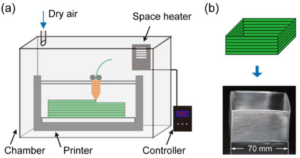
Fang, Lichen; Yan, Yishu; Agarwal, Ojaswi; Yao, Shengyu; Seppala, Jonathan E.; Kang, Sung Hoon
Effects of Environmental Temperature and Humidity on the Geometry and Strength of Polycarbonate Specimens Prepared by Fused Filament Fabrication Journal Article
In: Materials , vol. 13, no. 19, 2020.
Links | BibTeX | Tags: 3D printing, humidity, mechanical properties, modulus, temperature, toughness
@article{Fang2020b,
title = {Effects of Environmental Temperature and Humidity on the Geometry and Strength of Polycarbonate Specimens Prepared by Fused Filament Fabrication},
author = {Lichen Fang and Yishu Yan and Ojaswi Agarwal and Shengyu Yao and Jonathan E. Seppala and Sung Hoon Kang
},
url = {https://www.mdpi.com/1996-1944/13/19/4414},
doi = {https://doi.org/10.3390/ma13194414},
year = {2020},
date = {2020-10-03},
journal = {Materials },
volume = {13},
number = {19},
keywords = {3D printing, humidity, mechanical properties, modulus, temperature, toughness},
pubstate = {published},
tppubtype = {article}
}
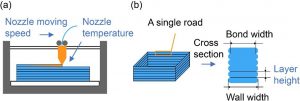
Fang, Lichen; Yan, Yishu; Agarwal, Ojaswi; Seppala, Jonathan E.; Hemker, Kevin J.; Kang, Sung Hoon
Processing-structure-property relationships of bisphenol-A-polycarbonate samples prepared by fused filament fabrication Journal Article
In: Additive Manufacturing, vol. 35, 2020.
Links | BibTeX | Tags: 3D printing, Geometry, mechancal properties, modulus, toughness
@article{Fang2020,
title = {Processing-structure-property relationships of bisphenol-A-polycarbonate samples prepared by fused filament fabrication},
author = {Lichen Fang and Yishu Yan and Ojaswi Agarwal and Jonathan E. Seppala and Kevin J. Hemker and Sung Hoon Kang},
url = {https://www.sciencedirect.com/science/article/pii/S2214860420306576},
doi = {https://doi.org/10.1016/j.addma.2020.101285},
year = {2020},
date = {2020-05-11},
journal = {Additive Manufacturing},
volume = {35},
keywords = {3D printing, Geometry, mechancal properties, modulus, toughness},
pubstate = {published},
tppubtype = {article}
}
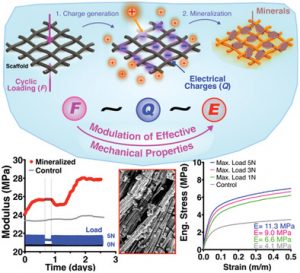
Orrego, Santiago; Chen, Zhezhi; Krekora, Urszula; Hou, Decheng; Jeon, Seung‐Yeol; Pittman, Matthew; Montoya, Carolina; Chen, Yun; Kang, Sung Hoon
Bioinspired Materials with Self‐Adaptable Mechanical Properties Journal Article
In: Advanced Materials, 2020.
Abstract | Links | BibTeX | Tags: adaptive, Bio-Inspired, bio-inspired science and engineering, biomaterial, mechanics of soft materials and structures, mineral, multifunctional material, piezoelectric, porous structure, regeneration
@article{Orrego2020,
title = {Bioinspired Materials with Self‐Adaptable Mechanical Properties},
author = {Santiago Orrego and Zhezhi Chen and Urszula Krekora and Decheng Hou and Seung‐Yeol Jeon and Matthew Pittman and Carolina Montoya and Yun Chen and Sung Hoon Kang},
url = {https://onlinelibrary.wiley.com/doi/full/10.1002/adma.201906970},
doi = {https://doi.org/10.1002/adma.201906970},
year = {2020},
date = {2020-04-17},
journal = {Advanced Materials},
abstract = {Natural structural materials, such as bone, can autonomously modulate their mechanical properties in response to external loading to prevent failure. These material systems smartly control the addition/removal of material in locations of high/low mechanical stress by utilizing local resources guided by biological signals. On the contrary, synthetic structural materials have unchanging mechanical properties limiting their mechanical performance and service life. Inspired by the mineralization process of bone, a material system that adapts its mechanical properties in response to external mechanical loading is reported. It is found that charges from piezoelectric scaffolds can induce mineralization from surrounding media. It is shown that the material system can adapt to external mechanical loading by inducing mineral deposition in proportion to the magnitude of the stress and the resulting piezoelectric charges. Moreover, the mineralization mechanism allows a simple one‐step route for fabricating functionally graded materials by controlling the stress distribution along the scaffold. The findings can pave the way for a new class of self‐regenerating materials that reinforce regions of high stress or induce deposition of minerals on the damaged areas from the increase in mechanical stress to prevent/mitigate failure. It is envisioned that the findings can contribute to addressing the current challenges of synthetic materials for load‐bearing applications from self‐adaptive capabilities.},
keywords = {adaptive, Bio-Inspired, bio-inspired science and engineering, biomaterial, mechanics of soft materials and structures, mineral, multifunctional material, piezoelectric, porous structure, regeneration},
pubstate = {published},
tppubtype = {article}
}
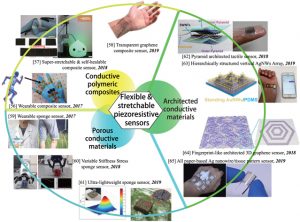
Li, Jing; Fang, Lichen; Sun, Bohan; Li, Xixing; Kang, Sung Hoon
Review—Recent Progress in Flexible and Stretchable Piezoresistive Sensors and Their Applications Journal Article
In: Journal of The Electrochemical Society, 2020.
Abstract | Links | BibTeX | Tags: Piezoresistive Sensors
@article{Li2020,
title = {Review—Recent Progress in Flexible and Stretchable Piezoresistive Sensors and Their Applications},
author = {Jing Li and Lichen Fang and Bohan Sun and Xixing Li and Sung Hoon Kang},
url = {https://iopscience.iop.org/article/10.1149/1945-7111/ab6828},
doi = {https://doi.org/10.1149/1945-7111/ab6828},
year = {2020},
date = {2020-02-03},
journal = {Journal of The Electrochemical Society},
abstract = {The recent advances in wearable electronics and intelligent human-machine interface systems have garnered great interests in electromechanical sensors, which can measure and quantify physical stimuli. Among different types of electromechanical sensors, piezoresistive sensors have been extensively investigated due to the excellent sensitivity, simple construction, and durability. Especially, there have been remarkable developments of flexible and stretchable piezoresistive sensors for wearable devices by investigating novel material/structural strategies to obtain highly sensitive piezoresistive sensors with skin-like flexibility. Here, we give a comprehensive overview of the recent progress in flexible and stretchable piezoresistive sensors and their applications. Based on the material composition and structural characteristics, the piezoresistive sensors are categorized into three types—conductive polymeric composite, porous conductive material, and architected conductive material. Subsequently, we have summarized their transduction mechanisms, fabrication processes, sensing performances, and applications. Finally, we have discussed current challenges and future opportunities for piezoresistive sensors.},
keywords = {Piezoresistive Sensors},
pubstate = {published},
tppubtype = {article}
}

Bachtiar, E. O.; Erol, O.; M. Millrod,; Tao, R.; Gracias, D. H.; Romer, L. H.; Kang, S. H.
3D printing and characterizations of a soft and biostable elastomer with high flexibility and strength for biomedical applications Journal Article
In: Journal of the Mechanical Behavior of Biomedical Materials, 2020.
Abstract | Links | BibTeX | Tags: 3D printing
@article{Bachtiar2020,
title = {3D printing and characterizations of a soft and biostable elastomer with high flexibility and strength for biomedical applications},
author = {E. O. Bachtiar and O. Erol and M. Millrod, and R. Tao and D. H. Gracias and L. H. Romer and S. H. Kang},
url = {https://www.sciencedirect.com/science/article/pii/S1751616119316728},
doi = {https://doi.org/10.1016/j.jmbbm.2020.103649},
year = {2020},
date = {2020-01-23},
journal = {Journal of the Mechanical Behavior of Biomedical Materials},
abstract = {Recent advancements in 3D printing have revolutionized biomedical engineering by enabling the manufacture of complex and functional devices in a low-cost, customizable, and small-batch fabrication manner. Soft elastomers are particularly important for biomedical applications because they can provide similar mechanical properties as tissues with improved biocompatibility. However, there are very few biocompatible elastomers with 3D printability, and little is known about material properties of biocompatible 3D printable elastomers. Here, we report a new framework to 3D print a soft, biocompatible, and biostable polycarbonate-based urethane silicone (PCU-Sil) with minimal defects. We systematically characterize the rheological and thermal properties of the material to guide the 3D printing process and have determined a range of processing conditions. Optimal printing parameters such as printing speed, temperature, and layer height are determined via parametric studies aimed at minimizing porosity while maximizing the geometric accuracy of the 3D-printed samples as evaluated via micro-CT. We also characterize the mechanical properties of the 3D-printed structures under quasistatic and cyclic loading, degradation behavior and biocompatibility. The 3D-printed materials show a Young's modulus of 6.9 ± 0.85 MPa and a failure strain of 457 ± 37.7% while exhibiting good cell viability. Finally, compliant and free-standing structures including a patient-specific heart model and a bifurcating arterial structure are printed to demonstrate the versatility of the 3D-printed material. We anticipate that the 3D printing framework presented in this work will open up new possibilities not just for PCU-Sil but for other soft, biocompatible and thermoplastic polymers in various biomedical applications requiring high flexibility and strength combined with biocompatibility, such as vascular implants, heart valves, and catheters.},
keywords = {3D printing},
pubstate = {published},
tppubtype = {article}
}
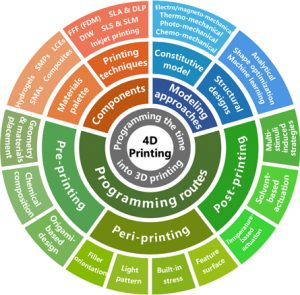
Shen, Beijun; Erol, Ozan; Fang, Lichen; Kang, Sung Hoon
Programming the time into 3D printing: current advances and future directions in 4D printing Journal Article
In: Multifunctional Materials, vol. 3, no. 1, 2020.
Abstract | Links | BibTeX | Tags: 3D printing
@article{Shen2020,
title = {Programming the time into 3D printing: current advances and future directions in 4D printing},
author = {Beijun Shen and Ozan Erol and Lichen Fang and Sung Hoon Kang},
url = {https://iopscience.iop.org/article/10.1088/2399-7532/ab54ea},
doi = {https://doi.org/10.1088/2399-7532/ab54ea},
year = {2020},
date = {2020-01-23},
journal = {Multifunctional Materials},
volume = {3},
number = {1},
abstract = {The recent advances in wearable electronics and intelligent human-machine interface systems have garnered great interests in electromechanical sensors, which can measure and quantify physical stimuli. Among different types of electromechanical sensors, piezoresistive sensors have been extensively investigated due to the excellent sensitivity, simple construction, and durability. Especially, there have been remarkable developments of flexible and stretchable piezoresistive sensors for wearable devices by investigating novel material/structural strategies to obtain highly sensitive piezoresistive sensors with skin-like flexibility. Here, we give a comprehensive overview of the recent progress in flexible and stretchable piezoresistive sensors and their applications. Based on the material composition and structural characteristics, the piezoresistive sensors are categorized into three types—conductive polymeric composite, porous conductive material, and architected conductive material. Subsequently, we have summarized their transduction mechanisms, fabrication processes, sensing performances, and applications. Finally, we have discussed current challenges and future opportunities for piezoresistive sensors.},
keywords = {3D printing},
pubstate = {published},
tppubtype = {article}
}
2019
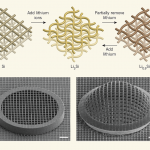
Jeon, S. -Y.; Kang, S. H.
Electrochemical reactions drive morphing of materials Journal Article
In: Nature, vol. 573, pp. 198-199, 2019.
Abstract | Links | BibTeX | Tags: 3D printing, architected materials, shape, Tunable
@article{Jeon2019,
title = {Electrochemical reactions drive morphing of materials},
author = {S.-Y. Jeon and S. H. Kang},
url = {https://www.nature.com/articles/d41586-019-02663-9},
doi = {10.1038/d41586-019-02663-9},
year = {2019},
date = {2019-09-11},
journal = {Nature},
volume = {573},
pages = {198-199},
abstract = {Silicon anodes in lithium batteries expand during discharge, causing failure. This expansion has been used constructively in a material whose architecture controllably and reversibly changes to alter its function.},
keywords = {3D printing, architected materials, shape, Tunable},
pubstate = {published},
tppubtype = {article}
}
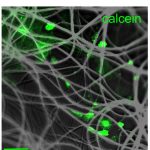
Dagro, A.; Ramesh, K.; Venkatesan, A.; Kang, S. H.; Orrego, S.; Rajbhandari, L.
Quantifying the local mechanical properties of cells in a fibrous three-dimensional microenvironment Journal Article
In: Biophysical Journal, vol. 117, pp. 817-828, 2019.
Abstract | Links | BibTeX | Tags: 3D, cells, electrospinning, fiber, mechanical properties, microenvironment
@article{Dagro2019,
title = {Quantifying the local mechanical properties of cells in a fibrous three-dimensional microenvironment},
author = {A. Dagro and K. Ramesh and A. Venkatesan and S. H. Kang and S. Orrego and L. Rajbhandari},
url = {https://www.sciencedirect.com/science/article/pii/S0006349519306319#fig1},
doi = {10.1016/j.bpj.2019.07.042},
year = {2019},
date = {2019-09-03},
journal = {Biophysical Journal},
volume = {117},
pages = {817-828},
abstract = {Measurements of the mechanical response of biological cells are critical for understanding injury and disease, for developing diagnostic tools, and for computational models in mechanobiology. Although it is well known that cells are sensitive to the topography of their microenvironment, the current paradigm in mechanical testing of adherent cells is mostly limited to specimens grown on flat two-dimensional substrates. In this study, we introduce a technique in which cellular indentation via optical trapping is performed on cells at a high spatial resolution to obtain their regional mechanical properties while they exist in a more favorable three-dimensional microenvironment. We combine our approach with nonlinear contact mechanics theory to consider the effects of a large deformation. This allows us to probe length scales that are relevant for obtaining overall cell stiffness values. The experimental results herein provide the hyperelastic material properties at both high (∼100 s−1) and low (∼1–10 s−1) strain rates of murine central nervous system glial cells. The limitations due to possible misalignment of the indenter in the three-dimensional space are examined using a computational model.},
keywords = {3D, cells, electrospinning, fiber, mechanical properties, microenvironment},
pubstate = {published},
tppubtype = {article}
}
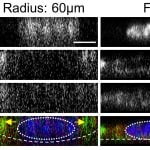
Jung, Wei-Hung; Elawad, Khalid; Kang, Sung Hoon; Chen, Yun
Cell–Cell Adhesion and Myosin Activity Regulate Cortical Actin Assembly in Mammary Gland Epithelium on Concaved Surface Journal Article
In: Cells, vol. 8, no. 8, pp. 813, 2019.
Abstract | Links | BibTeX | Tags: 3D printing, cell behaviors, curvature sensing, Geometry, multi-cellular
@article{Jung2019,
title = {Cell–Cell Adhesion and Myosin Activity Regulate Cortical Actin Assembly in Mammary Gland Epithelium on Concaved Surface},
author = {Wei-Hung Jung and Khalid Elawad and Sung Hoon Kang and Yun Chen},
url = {https://www.mdpi.com/2073-4409/8/8/813},
doi = {10.3390/cells8080813},
year = {2019},
date = {2019-08-02},
journal = {Cells},
volume = {8},
number = {8},
pages = {813},
abstract = {It has been demonstrated that geometry can affect cell behaviors. Though curvature-sensitive proteins at the nanoscale are studied, it is unclear how cells sense curvature at the cellular and multicellular levels. To characterize and determine the mechanisms of curvature-dependent cell behaviors, we grow cells on open channels of the 60-µm radius. We found that cortical F-actin is 1.2-fold more enriched in epithelial cells grown on the curved surface compared to the flat control. We observed that myosin activity is required to promote cortical F-actin formation. Furthermore, cell-cell contact was shown to be indispensable for curvature-dependent cortical actin assembly. Our results indicate that the actomyosin network coupled with adherens junctions is involved in curvature-sensing at the multi-cellular level.},
keywords = {3D printing, cell behaviors, curvature sensing, Geometry, multi-cellular},
pubstate = {published},
tppubtype = {article}
}
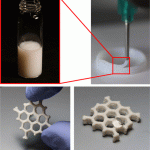
Jiang, Zhuoran; Erol, Ozn; Chatterjee, Devina; Xu, Weinan; Hibino, Narutoshi; Romer, Lewis H.; Kang, Sung Hoon; Gracias, David H.
Direct Ink Writing of Poly(tetrafluoroethylene) (PTFE) with Tunable Mechanical Properties Journal Article
In: ACS Applied Materials and Interfaces, 2019.
Abstract | Links | BibTeX | Tags: 3D printing, additive manufacturing, composites, fluoropolymer, PTFE, Teflon, Tunable
@article{Jiang2019,
title = {Direct Ink Writing of Poly(tetrafluoroethylene) (PTFE) with Tunable Mechanical Properties},
author = {Zhuoran Jiang and Ozn Erol and Devina Chatterjee and Weinan Xu and Narutoshi Hibino and Lewis H. Romer and Sung Hoon Kang and David H. Gracias},
url = {https://doi.org/10.1021/acsami.9b07279},
doi = {10.1021/acsami.9b07279},
year = {2019},
date = {2019-07-10},
journal = {ACS Applied Materials and Interfaces},
abstract = {Poly(tetrafluoroethylene) (PTFE) is a unique polymer with highly desirable properties such as resistance to chemical degradation, biocompatibility, hydrophobicity, antistiction, and low friction coefficient. However, due to its high melt viscosity, it is not possible to three-dimensional (3D)-print PTFE structures using nozzle-based extrusion. Here, we report a new and versatile strategy for 3D-printing PTFE structures using direct ink writing (DIW). Our approach is based on a newly formulated PTFE nanoparticle ink and thermal treatment process. The ink was formulated by mixing an aqueous dispersion of surfactant-stabilized PTFE nanoparticles with a binding gum to optimize its shear-thinning properties required for DIW. We developed a multistage thermal treatment to fuse the PTFE nanoparticles, solidify the printed structures, and remove the additives. We have extensively characterized the rheological and mechanical properties and processing parameters of these structures using imaging, mechanical testing, and statistical design of experiments. Importantly, several of the mechanical and structural properties of the final-printed PTFE structures resemble that of compression-molded PTFE, and additionally, the mechanical properties are tunable. We anticipate that this versatile approach facilitates the production of 3D-printed PTFE components using DIW with significant potential applications in engineering and medicine.},
keywords = {3D printing, additive manufacturing, composites, fluoropolymer, PTFE, Teflon, Tunable},
pubstate = {published},
tppubtype = {article}
}
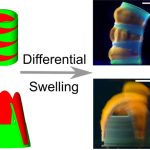
Liu, Jiayu; Erol, Ozan; Pantula, Aishwarya; Liu, Wangqu; Jiang, Zhuoran; Kobayashi, Kunihiko; Chatterjee, Devina; Hibino, Narutoshi; Romer, Lewis H.; Kang, Sung Hoon; Nguyen, Thao D.; Gracias, David H.
Dual-Gel 4D Printing of Bioinspired Tubes Journal Article
In: ACS Applied Materials & Interfaces, 2019.
Abstract | Links | BibTeX | Tags: 3D printing; architected materials; multilateral; mechanics of soft materials and structures; stimuli-responsive; implants; 4D printing; biomedical engineering, bio-inspired science and engineering, Symmetry Breaking
@article{doi:10.1021/acsami.8b17218,
title = {Dual-Gel 4D Printing of Bioinspired Tubes},
author = {Jiayu Liu and Ozan Erol and Aishwarya Pantula and Wangqu Liu and Zhuoran Jiang and Kunihiko Kobayashi and Devina Chatterjee and Narutoshi Hibino and Lewis H. Romer and Sung Hoon Kang and Thao D. Nguyen and David H. Gracias},
url = {https://doi.org/10.1021/acsami.8b17218},
doi = {10.1021/acsami.8b17218},
year = {2019},
date = {2019-01-29},
journal = {ACS Applied Materials & Interfaces},
abstract = {The distribution of periodic patterns of materials with radial or bilateral symmetry is a universal natural design principle. Among the many biological forms, tubular shapes are a common motif in many organisms, and they are also important for bioimplants and soft robots. However, the simple design principle of strategic placement of 3D printed segments of swelling and nonswelling materials to achieve widely different functionalities is yet to be demonstrated. Here, we report the design, fabrication, and characterization of segmented 3D printed gel tubes composed of an active thermally responsive swelling gel (poly N-isopropylacrylamide) and a passive thermally nonresponsive gel (polyacrylamide). Using finite element simulations and experiments, we report a variety of shape changes including uniaxial elongation, radial expansion, bending, and gripping based on two gels. Actualization and characterization of thermally induced shape changes are of key importance to robotics and biomedical engineering. Our studies present rational approaches to engineer complex parameters with a high level of customization and tunability for additive manufacturing of dynamic gel structures.},
keywords = {3D printing; architected materials; multilateral; mechanics of soft materials and structures; stimuli-responsive; implants; 4D printing; biomedical engineering, bio-inspired science and engineering, Symmetry Breaking},
pubstate = {published},
tppubtype = {article}
}

Li, Jing; Orrego, Santiago; Pan, Junjie; He, Peisheng; Kang, Sung Hoon
Ultrasensitive, flexible, and low-cost nanoporous piezoresistive composite for tactile pressure sensing Journal Article
In: Nanoscale, vol. 11, pp. 2779-2786, 2019.
Abstract | Links | BibTeX | Tags: composite, porous, pressure, Sensor, soft, stretchable electronics
@article{Li2019,
title = {Ultrasensitive, flexible, and low-cost nanoporous piezoresistive composite for tactile pressure sensing},
author = {Jing Li and Santiago Orrego and Junjie Pan and Peisheng He and Sung Hoon Kang},
url = {https://pubs.rsc.org/en/content/articlepdf/2014/NR/C8NR09959F?page=search},
doi = {10.1039/C8NR09959F.},
year = {2019},
date = {2019-01-02},
journal = {Nanoscale},
volume = {11},
pages = {2779-2786},
abstract = {Highly sensitive flexible tactile sensors are of continuing interest for various applications including wearable devices, human- machine interface, and internet of things. Current technologies for high sensitivity piezoresistive sensors rely on costly materials and/or fabrication methods such as graphene-based and micro-structured composites limiting accessibility and scalability. Here, we report a facile sacrificial casting-etching method to synthesize nanoporous carbon nanotube/polymer composites for ultra-sensitive and low-cost piezoresistive pressure sensors. Our synthesis method overcomes the limitations of traditional solution-dip-coating method for adhering nanoscale conductive materials to the nanoscale porous surface. Importantly, we show ultra-high sensitivity with a strain gauge factor over 300, which is ~50 times higher than that of traditional CNT-based piezoresistive sensors and ~10 times higher than most of graphene-based ones. For practical tactile sensing applications, we demonstrate that the sensors can detect both gentle pressures (1 Pa-1 kPa) and low-pressure (1 kPa-25 kPa) with a fraction of cost. Our nanoporous polymer composite could contribute to expanding the scope of using nanocomposites for applications including subtle locomotion sensing, interactive human-machine interface systems, and internet of things from its easy tunability for sensing diverse range tactile signals.},
keywords = {composite, porous, pressure, Sensor, soft, stretchable electronics},
pubstate = {published},
tppubtype = {article}
}
2018
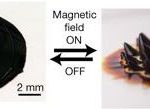
Wang, Wendong; Timonen, Jaakko V. I.; Carlson, Andreas; Drotlef, Dirk-Michael; Zhang, Cathy T.; Kolle, Stefan; Grinthal, Alison; Wong, Tak-Sing; Hatton, Benjamin; Kang, Sung Hoon; Kennedy, Stephen; Chi, Joshua; Blough, Robert Thomas; Sitti, Metin; Mahadevan, L.; Aizenberg, Joanna
Multifunctional ferrofluid-infused surfaces with reconfigurable multiscale topography Journal Article
In: Nature, vol. 559, pp. 77-82, 2018.
Abstract | Links | BibTeX | Tags: ferrofluid, liquid-infused, multifunctional, Reconfigurable, responsive, topography
@article{Wang2018,
title = {Multifunctional ferrofluid-infused surfaces with reconfigurable multiscale topography},
author = {Wendong Wang and Jaakko V. I. Timonen and Andreas Carlson and Dirk-Michael Drotlef and Cathy T. Zhang and Stefan Kolle and Alison Grinthal and Tak-Sing Wong and Benjamin Hatton and Sung Hoon Kang and Stephen Kennedy and Joshua Chi and Robert Thomas Blough and Metin Sitti and L. Mahadevan and Joanna Aizenberg },
url = {https://www.nature.com/articles/s41586-018-0250-8},
year = {2018},
date = {2018-06-25},
journal = {Nature},
volume = {559},
pages = {77-82},
abstract = {Developing adaptive materials with geometries that change in response to external stimuli provides fundamental insights into the links between the physical forces involved and the resultant morphologies and creates a foundation for technologically relevant dynamic systems. In particular, reconfigurable surface topography as a means to control interfacial properties has recently been explored using responsive gels, shape-memory polymers, liquid crystals and hybrid composites including magnetically active slippery surfaces. However, these designs exhibit a limited range of topographical changes and thus a restricted scope of function. Here we introduce a hierarchical magneto-responsive composite surface, made by infiltrating a ferrofluid into a microstructured matrix (termed ferrofluid-containing liquid-infused porous surfaces, or FLIPS). We demonstrate various topographical reconfigurations at multiple length scales and a broad range of associated emergent behaviours. An applied magnetic-field gradient induces the movement of magnetic nanoparticles suspended in the ferrofluid, which leads to microscale flow of the ferrofluid first above and then within the microstructured surface. This redistribution changes the initially smooth surface of the ferrofluid (which is immobilized by the porous matrix through capillary forces) into various multiscale hierarchical topographies shaped by the size, arrangement and orientation of the confining microstructures in the magnetic field. We analyse the spatial and temporal dynamics of these reconfigurations theoretically and experimentally as a function of the balance between capillary and magnetic pressures and of the geometric anisotropy of the FLIPS system. Several interesting functions at three different length scales are demonstrated: self-assembly of colloidal particles at the micrometre scale; regulated flow of liquid droplets at the millimetre scale; and switchable adhesion and friction, liquid pumping and removal of biofilms at the centimetre scale. We envision that FLIPS could be used as part of integrated control systems for the manipulation and transport of matter, thermal management, microfluidics and fouling-release materials.},
keywords = {ferrofluid, liquid-infused, multifunctional, Reconfigurable, responsive, topography},
pubstate = {published},
tppubtype = {article}
}
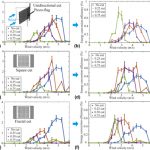
Fang, Lichen; Li, Jing; Zhu, Zeyu; Orrego, Santiago; Kang, Sung Hoon
Piezoelectric polymer thin films with architected cuts Journal Article
In: Journal of Materials Research, vol. 33, no. 3, pp. 330-342, 2018, (Invited article on Focus Issue on Architected Materials).
Abstract | Links | BibTeX | Tags: architected materials, Auxetic, energy harvesting, kirigami, mechanical metamaterial, piezoelectric, stretchable electronics, wind energy
@article{Fang2018,
title = {Piezoelectric polymer thin films with architected cuts},
author = {Lichen Fang and Jing Li and Zeyu Zhu and Santiago Orrego and Sung Hoon Kang},
editor = {Lorenzo Valdevit, Katia Bertoldi, James Guest, Christopher Spadaccini},
url = {https://www.cambridge.org/core/journals/journal-of-materials-research/article/piezoelectric-polymer-thin-films-with-architected-cuts/41109CD493CBADDE85D9446FCE3A95A7},
doi = {10.1557/jmr.2018.6},
year = {2018},
date = {2018-02-14},
journal = {Journal of Materials Research},
volume = {33},
number = {3},
pages = {330-342},
abstract = {Introducing architected cuts is an attractive and simple approach to tune mechanical behaviors of planar materials like thin films for desirable or enhanced mechanical performance. However, little has been studied on the effects of architected cuts on functional materials like piezoelectric materials. We investigated how architected cut patterns affect mechanical and piezoelectric properties of polyvinylidene fluoride thin films by numerical, experimental, and analytical studies. Our results show that thin films with architected cuts can provide desired mechanical features like enhanced compliance, stretchability, and controllable Poisson’s ratio and resonance frequency, while maintaining piezoelectric performance under static loadings. Moreover, we could observe maximum ∼30% improvement in piezoelectric conversion efficiency under dynamic loadings and harvest energy from low frequency (<100 Hz) mechanical signals or low velocity (<5 m/s) winds, which are commonly existing in ambient environment. Using architected cuts doesn't require changing the material or overall dimensions, making it attractive for applications in self-powered devices with design constraints.},
note = {Invited article on Focus Issue on Architected Materials},
keywords = {architected materials, Auxetic, energy harvesting, kirigami, mechanical metamaterial, piezoelectric, stretchable electronics, wind energy},
pubstate = {published},
tppubtype = {article}
}
2017
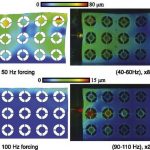
Wadhwa, Neal; Chen, Justin G; Sellon, Jonathan B; Wei, Donglai; Rubinstein, Michael; Ghaffari, Roozbeh; Freeman, Dennis M; Büyüköztürk, Oral; Wang, Pai; Sun, Sijie; Kang, Sung Hoon; Bertoldi, Katia; Durand, Frédo; Freeman, William T
Motion microscopy for visualizing and quantifying small motions Journal Article
In: Proceedings of the National Academy of Sciences, vol. 114, pp. 11639–11644, 2017.
Abstract | Links | BibTeX | Tags: dynamic, meta material, motion amplification
@article{Wadhwa16102017,
title = {Motion microscopy for visualizing and quantifying small motions},
author = {Neal Wadhwa and Justin G Chen and Jonathan B Sellon and Donglai Wei and Michael Rubinstein and Roozbeh Ghaffari and Dennis M Freeman and Oral Büyüköztürk and Pai Wang and Sijie Sun and Sung Hoon Kang and Katia Bertoldi and Frédo Durand and William T Freeman},
url = {http://www.pnas.org/content/early/2017/10/11/1703715114.abstract},
doi = {10.1073/pnas.1703715114},
year = {2017},
date = {2017-10-16},
journal = {Proceedings of the National Academy of Sciences},
volume = {114},
pages = {11639–11644},
abstract = {Although the human visual system is remarkable at perceiving and interpreting motions, it has limited sensitivity, and we cannot see motions that are smaller than some threshold. Although difficult to visualize, tiny motions below this threshold are important and can reveal physical mechanisms, or be precursors to large motions in the case of mechanical failure. Here, we present a âmotion microscope,â a computational tool that quantifies tiny motions in videos and then visualizes them by producing a new video in which the motions are made large enough to see. Three scientific visualizations are shown, spanning macroscopic to nanoscopic length scales. They are the resonant vibrations of a bridge demonstrating simultaneous spatial and temporal modal analysis, micrometer vibrations of a metamaterial demonstrating wave propagation through an elastic matrix with embedded resonating units, and nanometer motions of an extracellular tissue found in the inner ear demonstrating a mechanism of frequency separation in hearing. In these instances, the motion microscope uncovers hidden dynamics over a variety of length scales, leading to the discovery of previously unknown phenomena.},
keywords = {dynamic, meta material, motion amplification},
pubstate = {published},
tppubtype = {article}
}

Li, Jing; Zhu, Zhiren; Fang, Lichen; Guo, Shu; Erturun, Ugur; Zhu, Zeyu; West, James E; Ghosh, Somnath; Kang, Sung Hoon
Analytical, numerical, and experimental studies of viscoelastic effects on the performance of soft piezoelectric nanocomposites Journal Article
In: Nanoscale, vol. 9, pp. 14215-14228, 2017.
Abstract | Links | BibTeX | Tags: analytical, composite, energy harvesting, experimental, mechanics of soft materials and structures, numerical, piezoelectric, sensing, viscoelasticity
@article{C7NR05163H,
title = {Analytical, numerical, and experimental studies of viscoelastic effects on the performance of soft piezoelectric nanocomposites},
author = {Jing Li and Zhiren Zhu and Lichen Fang and Shu Guo and Ugur Erturun and Zeyu Zhu and James E West and Somnath Ghosh and Sung Hoon Kang},
url = {http://dx.doi.org/10.1039/C7NR05163H},
doi = {10.1039/C7NR05163H},
year = {2017},
date = {2017-09-15},
journal = {Nanoscale},
volume = {9},
pages = {14215-14228},
publisher = {The Royal Society of Chemistry},
abstract = {Piezoelectric composite (p-NC) made of a polymeric matrix and piezoelectric nanoparticles with conductive additives is an attractive material for many applications. As the matrix of p-NC is made of viscoelastic materials, both elastic and viscous characteristics of the matrix are expected to contribute to the piezoelectric response of p-NC. However, there is limited understanding of how viscoelasticity influences the piezoelectric performance of p-NC. Here we combined analytical and numerical analyses with experimental studies to investigate effects of viscoelasticity on piezoelectric performance of p-NC. The viscoelastic properties of synthesized p-NCs were controlled by changing the ratio between monomer and cross-linker of the polymer matrix. We found good agreement between our analytical models and experimental results for both quasi-static and dynamic loadings. It is found that, under quasi-static loading conditions, the piezoelectric coefficients (d33) of the specimen with the lowest Young's modulus ([similar]0.45 MPa at 5% strain) were [similar]120 pC N-1, while the one with the highest Young's modulus ([similar]1.3 MPa at 5% strain) were [similar]62 pC N-1. The results suggest that softer matrices enhance the energy harvesting performance because they can result in larger deformation for a given load. Moreover, from our theoretical analysis and experiments under dynamic loading conditions, we found the viscous modulus of a matrix is also important for piezoelectric performance. For instance, at 40 Hz and 50 Hz the storage moduli of the softest specimen were [similar]0.625 MPa and [similar]0.485 MPa, while the loss moduli were [similar]0.108 MPa and [similar]0.151 MPa, respectively. As piezocomposites with less viscous loss can transfer mechanical energy to piezoelectric particles more efficiently, the dynamic piezoelectric coefficient (d[prime or minute]33) measured at 40 Hz ([similar]53 pC N-1) was larger than that at 50 Hz ([similar]47 pC N-1) though it has a larger storage modulus. As an application of our findings, we fabricated 3D piezo-shells with different viscoelastic properties and compared the charging time. The results showed a good agreement with the predicted trend that the composition with the smallest elastic and viscous moduli showed the fastest charging rate. Our findings can open new opportunities for optimizing the performance of polymer-based multifunctional materials by harnessing viscoelasticity.},
keywords = {analytical, composite, energy harvesting, experimental, mechanics of soft materials and structures, numerical, piezoelectric, sensing, viscoelasticity},
pubstate = {published},
tppubtype = {article}
}
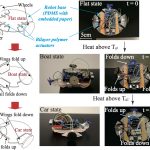
Chen, Shuyang; Li, Jing; Fang, Lichen; Zhu, Zeyu; Kang, Sung Hoon
Simple Triple-State Polymer Actuators with Controllable Folding Characteristics Journal Article
In: Applied Physics Letters, vol. 110, pp. 133506, 2017.
Abstract | Links | BibTeX | Tags: Bio-Inspired, mechanics of soft materials and structures, polymer, programmable material, Self-Folding, transformer
@article{Chen2017,
title = {Simple Triple-State Polymer Actuators with Controllable Folding Characteristics},
author = {Shuyang Chen and Jing Li and Lichen Fang and Zeyu Zhu and Sung Hoon Kang},
url = {http://aip.scitation.org/doi/pdf/10.1063/1.4979560},
doi = {10.1063/1.4979560},
year = {2017},
date = {2017-03-30},
journal = {Applied Physics Letters},
volume = {110},
pages = {133506},
abstract = {Driven by the interests in self-folding, there have been studies developing artificial self-folding structures at different length scales based on various polymer actuators that can realize dual-state actuation. However, their unidirectional nature limits the applicability of the actuators for a wide range of multi-state self-folding behaviors. In addition, complex fabrication and programming procedures hinder broad applications of existing polymer actuators. Moreover, few of the exiting polymer actuators are able to show the self-folding behaviors with precise control of curvature and force. To address these issues, we report an easy-to-fabricate triple-state actuator with controllable folding behaviors based on bilayer polymer composites with different glass transition temperatures. Initially, the fabricated actuator is in flat state, and it can sequentially self-fold to angled folding states of opposite directions as it is heated up. Based on an analytical model and measured partial recovery behaviors of polymers, we can accurately control the folding characteristics (curvature and force) for rational design. To demonstrate an application of our triple-state actuator, we have developed a self-folding transformer robot which self-folds from a two-dimensional sheet into a three-dimensional boat-like configuration and transforms from the boat shape to a car shape with the increase of the temperature applied to the actuator. Our findings offer a simple approach to generate multiple configurations from a single system by harnessing behaviors of polymers with rational design.},
keywords = {Bio-Inspired, mechanics of soft materials and structures, polymer, programmable material, Self-Folding, transformer},
pubstate = {published},
tppubtype = {article}
}
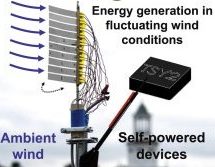
Orrego, Santiago; Shoele, Kourosh; Ruas, Andre; Doran, Kyle; Caggiano, Brett; Mittal, Rajat; Kang, Sung Hoon
Harvesting ambient wind energy with an inverted piezoelectric flag Journal Article
In: Applied Energy, vol. 194, pp. 212-222, 2017.
Abstract | Links | BibTeX | Tags: energy harvesting, inverted flag, piezoelectric, renewable energy, self-aligned, wind
@article{Orrego2017,
title = {Harvesting ambient wind energy with an inverted piezoelectric flag},
author = {Santiago Orrego and Kourosh Shoele and Andre Ruas and Kyle Doran and Brett Caggiano and Rajat Mittal and Sung Hoon Kang},
url = {http://www.sciencedirect.com/science/article/pii/S0306261917302350},
doi = {10.1016/j.apenergy.2017.03.016},
year = {2017},
date = {2017-03-19},
journal = {Applied Energy},
volume = {194},
pages = {212-222},
abstract = {The paper describes an experimental study of wind energy harvesting by self-sustained oscillations (flutter) of a flexible piezoelectric membrane fixed in a novel orientation called the “inverted flag”. We conducted parametric studies to evaluate the influence of geometrical parameters of the flag on the flapping behavior and the resulting energy output. We have demonstrated the capability for inducing aero-elastic flutter in a desired wind velocity range by simply tuning the geometrical parameters of the flag. A peak electrical power of ∼5.0 mW/cm3 occurred at a wind velocity of 9 m/s. Our devices showed sustained power generation (∼0.4 mW/cm3) even in low-wind speed regimes (∼3.5 m/s) suitable for ambient wind energy harvesting. We also conducted outdoor experiments and harvested ambient wind energy to power a temperature sensor without employing a battery for energy storage. Moreover, a self-aligning mechanism to compensate for changing wind directions was incorporated and resulted in an increase in the temperature sensor data output by more than 20 times. These findings open new opportunities for self-powered devices using ambient wind energy with fluctuating conditions and low speed regimes.},
keywords = {energy harvesting, inverted flag, piezoelectric, renewable energy, self-aligned, wind},
pubstate = {published},
tppubtype = {article}
}
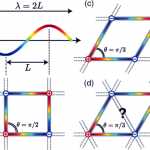
Wang, Pai; Zheng, Yue; Fernandes, Matheus C.; Sun, Yushen; Xu, Kai; Sun, Sijie; Kang, Sung Hoon; Tournat, Vincent; Bertoldi, Katia
Harnessing Geometric Frustration to Form Band Gaps in Acoustic Channel Lattices Journal Article
In: Physical Review Letters, vol. 118, pp. 084302, 2017.
Abstract | Links | BibTeX | Tags: Acoustic, architected materials, Band gap, Geometrical Frustration, Metamaterial
@article{Wang2017,
title = {Harnessing Geometric Frustration to Form Band Gaps in Acoustic Channel Lattices},
author = {Pai Wang and Yue Zheng and Matheus C. Fernandes and Yushen Sun and Kai Xu and Sijie Sun and Sung Hoon Kang and Vincent Tournat and Katia Bertoldi},
url = {https://journals.aps.org/prl/abstract/10.1103/PhysRevLett.118.084302},
doi = {10.1103/PhysRevLett.118.084302},
year = {2017},
date = {2017-02-21},
journal = {Physical Review Letters},
volume = {118},
pages = {084302},
abstract = {We demonstrate both numerically and experimentally that geometric frustration in two-dimensional periodic acoustic networks consisting of arrays of narrow air channels can be harnessed to form band gaps (ranges of frequency in which the waves cannot propagate in any direction through the system). While resonant standing wave modes and interferences are ubiquitous in all the analyzed network geometries, we show that they give rise to band gaps only in the geometrically frustrated ones (i.e., those comprising of triangles and pentagons). Our results not only reveal a new mechanism based on geometric frustration to suppress the propagation of pressure waves in specific frequency ranges but also open avenues for the design of a new generation of smart systems that control and manipulate sound and vibrations.},
keywords = {Acoustic, architected materials, Band gap, Geometrical Frustration, Metamaterial},
pubstate = {published},
tppubtype = {article}
}
2016
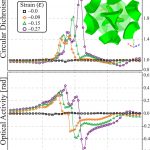
Zárate, Yair; Babaee, Sahab; Kang, Sung H.; Neshev, Dragomir N.; Shadrivov, Ilya V.; Bertoldi, Katia; Powell, David A.
Elastic metamaterials for tuning circular polarization of electromagnetic waves Journal Article
In: Scientific Reports, vol. 6, pp. 28273, 2016.
Abstract | Links | BibTeX | Tags: 3D printing, Auxetic, buckling, Chiral, electromagnetic, Metamaterial, Tunable
@article{Zárate2016,
title = {Elastic metamaterials for tuning circular polarization of electromagnetic waves},
author = {Yair Zárate and Sahab Babaee and Sung H. Kang and Dragomir N. Neshev and Ilya V. Shadrivov and Katia Bertoldi and David A. Powell},
url = {http://www.nature.com/articles/srep28273},
doi = {doi:10.1038/srep28273},
year = {2016},
date = {2016-06-20},
journal = {Scientific Reports},
volume = {6},
pages = {28273},
abstract = {Electromagnetic resonators are integrated with advanced elastic material to develop a new type of tunable metamaterial. An electromagnetic-elastic metamaterial able to switch on and off its electromagnetic chiral response is experimentally demonstrated. Such tunability is attained by harnessing the unique buckling properties of auxetic elastic materials (buckliballs) with embedded electromagnetic resonators. In these structures, simple uniaxial compression results in a complex but controlled pattern of deformation, resulting in a shift of its electromagnetic resonance, and in the structure transforming to a chiral state. The concept can be extended to the tuning of three-dimensional materials constructed from the meta-molecules, since all the components twist and deform into the same chiral configuration when compressed.},
keywords = {3D printing, Auxetic, buckling, Chiral, electromagnetic, Metamaterial, Tunable},
pubstate = {published},
tppubtype = {article}
}
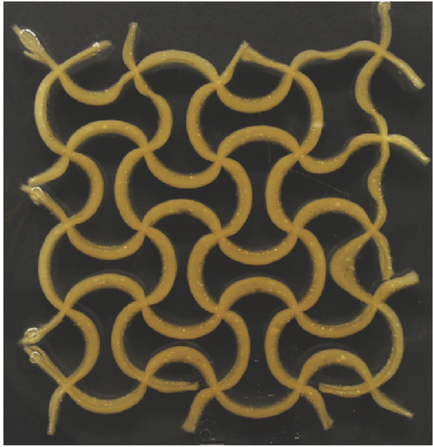
Liu, Jia; Gu, Tianyu; Shan, Sicong; Kang, Sung H.; Weaver, James C.; Bertoldi, Katia
Harnessing Buckling to Design Architected Materials that Exhibit Effective Negative Swelling Journal Article
In: Advanced Materials, vol. 28, pp. 6619–6624, 2016.
Abstract | Links | BibTeX | Tags: architected materials, Mechanical Instability, mechanics of soft materials and structures, Reversible, Soft Periodic Porous Structures
@article{Liu2016,
title = {Harnessing Buckling to Design Architected Materials that Exhibit Effective Negative Swelling},
author = {Jia Liu and Tianyu Gu and Sicong Shan and Sung H. Kang and James C. Weaver and Katia Bertoldi},
url = {http://onlinelibrary.wiley.com/doi/10.1002/adma.201600812/pdf},
doi = {10.1002/adma.201600812},
year = {2016},
date = {2016-05-17},
journal = {Advanced Materials},
volume = {28},
pages = {6619–6624},
abstract = {Inspired by the need to develop materials capable of targeted and extreme volume changes during operation, numerical simulations and experiments are combined to design a new class of soft architected materials that achieve a reduction of projected surface area coverage during swelling. },
keywords = {architected materials, Mechanical Instability, mechanics of soft materials and structures, Reversible, Soft Periodic Porous Structures},
pubstate = {published},
tppubtype = {article}
}

Kang, Sung Hoon; Michael D. Dickey, Guest Editors
Patterning via self-organization and self-folding: Beyond conventional lithography Journal Article
In: MRS Bulletin, vol. 41, no. 2, pp. 93-96, 2016, (co-Guest Editor of the issue).
Abstract | Links | BibTeX | Tags: Patterning, Self-Folding, Self-Organization
@article{Kang2016,
title = {Patterning via self-organization and self-folding: Beyond conventional lithography },
author = {Sung Hoon Kang and Michael D. Dickey, Guest Editors},
editor = {Sung Hoon Kang and Michael D. Dickey},
url = {http://journals.cambridge.org/download.php?file=%2FMRS%2FMRS41_02%2FS0883769416000038a.pdf&code=ffd6509119daa4a591802b67ab63f032},
doi = {10.1557/mrs.2016.3 },
year = {2016},
date = {2016-02-01},
journal = {MRS Bulletin},
volume = {41},
number = {2},
pages = {93-96},
abstract = {Conventional photolithography is an effective patterning technique that has enabled modern
electronics and advanced micro- and nanoscale devices. However, it has limitations, including
high cost, limited resolution, and poor compatibility with unconventional materials that may be
soft, nonplanar, or difficult to process. There is active research ongoing to develop unconventional
patterning methods such as self-organization and self-folding. Self-organization harnesses
various driving forces to produce patterns without external intervention and includes
methods such as self-assembly of block copolymers, capillary-driven assembly of micro-/
nanoscale structures, and thin-fi lm instabilities. Self-folding (origami)—and its cousin,
kirigami—harnesses patterning and materials strategies to convert planar substrates into
three-dimensional shapes in response to external stimuli. These multidisciplinary approaches
open many engineering opportunities by providing new and versatile material functionalities.
This article overviews the field and the topics covered in the articles in this issue of MRS Bulletin, highlighting recent progress in patterning approaches based on self-organization and self-folding. },
note = {co-Guest Editor of the issue},
keywords = {Patterning, Self-Folding, Self-Organization},
pubstate = {published},
tppubtype = {article}
}
electronics and advanced micro- and nanoscale devices. However, it has limitations, including
high cost, limited resolution, and poor compatibility with unconventional materials that may be
soft, nonplanar, or difficult to process. There is active research ongoing to develop unconventional
patterning methods such as self-organization and self-folding. Self-organization harnesses
various driving forces to produce patterns without external intervention and includes
methods such as self-assembly of block copolymers, capillary-driven assembly of micro-/
nanoscale structures, and thin-fi lm instabilities. Self-folding (origami)—and its cousin,
kirigami—harnesses patterning and materials strategies to convert planar substrates into
three-dimensional shapes in response to external stimuli. These multidisciplinary approaches
open many engineering opportunities by providing new and versatile material functionalities.
This article overviews the field and the topics covered in the articles in this issue of MRS Bulletin, highlighting recent progress in patterning approaches based on self-organization and self-folding.
2015
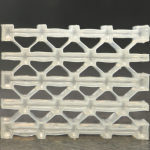
Shan, Sicong; Kang, Sung H.; Raney, Jordan R.; Wang, Pai; Fang, Lichen; Candido, Francisco; Lewis, Jennifer A.; Bertoldi, Katia
Multistable Architected Materials for Trapping Elastic Strain Energy Journal Article
In: Advanced Materials, vol. 27, pp. 4296–4301, 2015, ISSN: 1521-4095, (SS, SHK, JRR: equal contribution).
Links | BibTeX | Tags: 3D printing, architected materials, energy trapping, mechanics of soft materials and structures, multistability, reversibility
@article{ADMA:ADMA201501708,
title = {Multistable Architected Materials for Trapping Elastic Strain Energy},
author = {Sicong Shan and Sung H. Kang and Jordan R. Raney and Pai Wang and Lichen Fang and Francisco Candido and Jennifer A. Lewis and Katia Bertoldi},
url = {http://dx.doi.org/10.1002/adma.201501708},
issn = {1521-4095},
year = {2015},
date = {2015-06-18},
journal = {Advanced Materials},
volume = {27},
pages = {4296–4301},
note = {SS, SHK, JRR: equal contribution},
keywords = {3D printing, architected materials, energy trapping, mechanics of soft materials and structures, multistability, reversibility},
pubstate = {published},
tppubtype = {article}
}
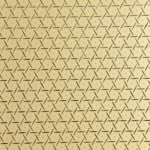
Shan, Sicong; Kang, Sung H.; Zhao, Zhenhao; Fang, Lichen; Bertoldi, Katia
Design of planar isotropic negative Poisson’s ratio structures Journal Article
In: Extreme Mechanics Letters, vol. 4, pp. 96–102, 2015, ISSN: 2352-4316.
Abstract | Links | BibTeX | Tags: architected materials, Auxetic, Isotropic, Symmetry
@article{Shan2015,
title = {Design of planar isotropic negative Poisson’s ratio structures},
author = {Sicong Shan and Sung H. Kang and Zhenhao Zhao and Lichen Fang and Katia Bertoldi},
url = {http://www.sciencedirect.com/science/article/pii/S2352431615000759},
doi = {10.1016/j.eml.2015.05.002},
issn = {2352-4316},
year = {2015},
date = {2015-05-21},
journal = {Extreme Mechanics Letters},
volume = {4},
pages = {96–102},
abstract = {Most of the auxetic materials that have been characterized experimentally or studied analytically are anisotropic and this limits their possible applications, as they need to be carefully oriented during operation. Here, through a combined numerical and experimental approach, we demonstrate that 2D auxetic materials with isotropic response can be easily realized by perforating a sheet with elongated cuts arranged to form a periodic pattern with either six-fold or three-fold symmetry. Moreover, we also show that the auxetic behavior can be easily tuned by varying the length of the cuts and that it is retained even under large levels of applied deformation beyond the limit of small strains. This novel, simple and scalable design can serve as an important guideline for designing and fabricating isotropic auxetic materials that can have a significant impact on a wide range of applications.},
keywords = {architected materials, Auxetic, Isotropic, Symmetry},
pubstate = {published},
tppubtype = {article}
}
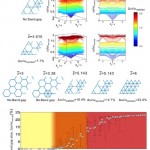
Wang, Pai; Casadei, Filippo; Kang, Sung Hoon; Bertoldi, Katia
Locally resonant band gaps in periodic beam lattices by tuning connectivity Journal Article
In: Physical Review B (Rapid Communications), vol. 91, pp. 020103, 2015.
Abstract | Links | BibTeX | Tags: architected materials, Band gap, Beam, Connectivity, Lattice, Local resonance, Periodic
@article{Wang2015,
title = {Locally resonant band gaps in periodic beam lattices by tuning connectivity},
author = {Pai Wang and Filippo Casadei and Sung Hoon Kang and Katia Bertoldi},
url = {http://journals.aps.org/prb/pdf/10.1103/PhysRevB.91.020103},
year = {2015},
date = {2015-01-26},
journal = {Physical Review B (Rapid Communications)},
volume = {91},
pages = {020103},
abstract = {Lattice structures have long fascinated physicists and engineers not only because of their outstanding functionalities, but also for their ability to control the propagation of elastic waves. While the study of the relation between the connectivity of these systems and their static properties has a long history that goes back to Maxwell, rules that connect the dynamic response to the network topology have not been established. Here, we demonstrate that by tuning the average connectivity of a beam network (z ̄), locally resonant band gaps can be generated in the structures without embedding additional resonating units. In particular, a critical threshold for z ̄ is identified, far from which the band gap size is purely dictated by the global lattice topology. By contrast, near this critical value, the detailed local geometry of the lattice also has strong effects. Moreover, in stark contrast to the static case, we find that the nature of the joints is irrelevant to the dynamic response of the lattices. Our results not only shed new light on the rich dynamic properties of periodic lattices, but also outline a new strategy to manipulate mechanical waves in elastic systems.},
keywords = {architected materials, Band gap, Beam, Connectivity, Lattice, Local resonance, Periodic},
pubstate = {published},
tppubtype = {article}
}
2014
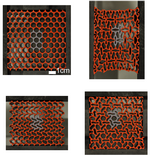
Shan, Sicong; Kang, Sung Hoon; Wang, Pai; Qu, Cangyu; Shian, Samuel; Chen, Elizabeth R.; Weaver, James C.; Bertoldi, Katia
Harnessing Multiple Folding Mechanisms in Soft Periodic and Porous Structures to Design Highly Tunable Phononic Crystals Journal Article
In: Advanced Functional Materials, vol. 24, pp. 4935–4942, 2014.
Abstract | Links | BibTeX | Tags: 3D printing, architected materials, Folding Mechanismsm, mechanics of soft materials and structures, Metamaterial, Phononic Crystals, Soft Periodic Porous Structures, Tunability
@article{Shan2014,
title = {Harnessing Multiple Folding Mechanisms in Soft Periodic and Porous Structures to Design Highly Tunable Phononic Crystals},
author = {Sicong Shan and Sung Hoon Kang and Pai Wang and Cangyu Qu and Samuel Shian and Elizabeth R. Chen and James C. Weaver and Katia Bertoldi},
url = {http://onlinelibrary.wiley.com/doi/10.1002/adfm.201400665/abstract},
year = {2014},
date = {2014-08-20},
journal = {Advanced Functional Materials},
volume = {24},
pages = {4935–4942},
abstract = {Mechanical instabilities in periodic porous elastic structures may lead to the formation of homogeneous patterns, opening avenues for a wide range of applications that are related to the geometry of the system. This study focuses on an elastomeric porous structure comprising a triangular array of circular holes, and shows that by controlling the loading direction, multiple pattern transformations can be induced by buckling. Interestingly, these different pattern transformations can be exploited to design materials with highly tunable properties. In particular, these results indicate that they can be effectively used to tune the propagation of elastic waves in phononic crystals, enhancing the tunability of the dynamic response of the system. Using a combination of finite element simulations and experiments, a proof-of-concept of the novel material is demonstrated. Since the proposed mechanism is induced by elastic instability, it is reversible, repeatable, and scale-independent, opening avenues for the design of highly tunable materials and devices over a wide range of length scales.},
keywords = {3D printing, architected materials, Folding Mechanismsm, mechanics of soft materials and structures, Metamaterial, Phononic Crystals, Soft Periodic Porous Structures, Tunability},
pubstate = {published},
tppubtype = {article}
}
Kang, Sung Hoon; Bertoldi, Katia; Shan, Sicong
Shape Recoverable Reusable Energy Absorbing Structures, Systems and Methods for Manufacture Thereof Technical Report
2014, (United States Provisional Patent Application No. 61/983,782).
BibTeX | Tags: 3D printing, architected materials, Energy-Absorption, Materials, Reversible, Structures
@techreport{Kang2014b,
title = {Shape Recoverable Reusable Energy Absorbing Structures, Systems and Methods for Manufacture Thereof},
author = {Sung Hoon Kang and Katia Bertoldi and Sicong Shan},
year = {2014},
date = {2014-04-24},
booktitle = {U.S. Provisional Patent Application No. 61/983,782},
note = {United States Provisional Patent Application No. 61/983,782},
keywords = {3D printing, architected materials, Energy-Absorption, Materials, Reversible, Structures},
pubstate = {published},
tppubtype = {techreport}
}
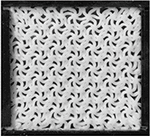
Kang, Sung Hoon; Shan, Sicong; Košmrlj, Andrej; Noorduin, Wim L.; Shian, Samuel; Weaver, James C.; Clarke, David R.; Bertoldi, Katia
Complex Ordered Patterns in Mechanical Instability Induced Geometrically Frustrated Triangular Cellular Structures Journal Article
In: Physical Review Letters, vol. 112, pp. 098701, 2014, (Selected as Physical Review Letters Editors’ Suggestion and Highlighted in Physics Synopsis.).
Abstract | Links | BibTeX | Tags: 3D printing, Cellular Structures, Geometrical Frustration, Mechanical Instability, mechanics of soft materials and structures, Triangular Lattice
@article{Kang2014,
title = {Complex Ordered Patterns in Mechanical Instability Induced Geometrically Frustrated Triangular Cellular Structures},
author = {Sung Hoon Kang and Sicong Shan and Andrej Košmrlj and Wim L. Noorduin and Samuel Shian and James C. Weaver and David R. Clarke and Katia Bertoldi},
url = {http://journals.aps.org/prl/abstract/10.1103/PhysRevLett.112.098701},
year = {2014},
date = {2014-03-05},
journal = {Physical Review Letters},
volume = {112},
pages = {098701},
abstract = {Geometrical frustration arises when a local order cannot propagate throughout the space because of geometrical constraints. This phenomenon plays a major role in many systems leading to disordered ground-state configurations. Here, we report a theoretical and experimental study on the behavior of buckling-induced geometrically frustrated triangular cellular structures. To our surprise, we find that buckling induces complex ordered patterns which can be tuned by controlling the porosity of the structures. Our analysis reveals that the connected geometry of the cellular structure plays a crucial role in the generation of ordered states in this frustrated system.},
note = {Selected as Physical Review Letters Editors’ Suggestion and Highlighted in Physics Synopsis.},
keywords = {3D printing, Cellular Structures, Geometrical Frustration, Mechanical Instability, mechanics of soft materials and structures, Triangular Lattice},
pubstate = {published},
tppubtype = {article}
}
2013

Shim, Jongmin; Shan, Sicong; Kosmrlj, Andrej; Kang, Sung Hoon; Chen, Elizabeth R.; Weaver, James C.; Bertoldi, Katia
Harnessing Instabilities for Design of Soft Reconfigurable Auxetic/Chiral Materials Journal Article
In: Soft Matter, vol. 9, pp. 8198-8202, 2013, (Highlighted on the Soft Matter blog.).
Abstract | Links | BibTeX | Tags: 3D printing, architected materials, Auxetic, Chiral, Mechanical Instability, mechanics of soft materials and structures, Metamaterial, Soft Periodic Porous Structures, Symmetry Breaking
@article{Shim2013,
title = {Harnessing Instabilities for Design of Soft Reconfigurable Auxetic/Chiral Materials},
author = {Jongmin Shim and Sicong Shan and Andrej Kosmrlj and Sung Hoon Kang and Elizabeth R. Chen and James C. Weaver and Katia Bertoldi},
url = {http://pubs.rsc.org/en/content/articlelanding/2013/sm/c3sm51148k#!divAbstract},
year = {2013},
date = {2013-05-31},
journal = {Soft Matter},
volume = {9},
pages = {8198-8202},
abstract = {Most materials have a unique form optimized for a specific property and function. However, the ability to reconfigure material structures depending on stimuli opens exciting opportunities. Although mechanical instabilities have been traditionally viewed as a failure mode, here we exploit them to design a class of 2D soft materials whose architecture can be dramatically changed in response to an external stimulus. By considering geometric constraints on the tessellations of the 2D Euclidean plane, we have identified four possible periodic distributions of uniform circular holes where mechanical instability can be exploited to reversibly switch between expanded (i.e. with circular holes) and compact (i.e. with elongated, almost closed elliptical holes) periodic configurations. Interestingly, in all these structures buckling is found to induce large negative values of incremental Poisson's ratio and in two of them also the formation of chiral patterns. Using a combination of finite element simulations and experiments at the centimeter scale we demonstrate a proof-of-concept of the proposed materials. Since the proposed mechanism for reconfigurable materials is induced by elastic instability, it is reversible, repeatable and scale-independent.},
note = {Highlighted on the Soft Matter blog.},
keywords = {3D printing, architected materials, Auxetic, Chiral, Mechanical Instability, mechanics of soft materials and structures, Metamaterial, Soft Periodic Porous Structures, Symmetry Breaking},
pubstate = {published},
tppubtype = {article}
}
Aizenberg, Joanna; He, Ximin; Kang, Sung Hoon; Wong, Tak-Sing
Anti-counterfeiting methods Technical Report
2013, (U.S. Patent No. 9,937,743 B2).
BibTeX | Tags: bio-inspired science and engineering, Reconfigurable, Security, Structured Surfaces
@techreport{Aizenberg2012,
title = {Anti-counterfeiting methods},
author = {Joanna Aizenberg and Ximin He and Sung Hoon Kang and Tak-Sing Wong},
year = {2013},
date = {2013-05-31},
note = {U.S. Patent No. 9,937,743 B2},
keywords = {bio-inspired science and engineering, Reconfigurable, Security, Structured Surfaces},
pubstate = {published},
tppubtype = {techreport}
}
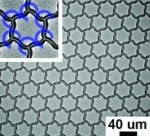
Kang, Sung Hoon; Shan, Sicong; Noorduin, Wim L.; Khan, Mughees; Aizenberg, Joanna; Bertoldi, Katia
Buckling-Induced Reversible Symmetry Breaking and Chiral Amplification Using Supported Cellular Structures Journal Article
In: Advanced Materials, vol. 25, pp. 3380-3385, 2013, (SHK, SS, and WLN contributed equally. Highlighted in the June 2013 issue of Nature Physics).
Abstract | Links | BibTeX | Tags: 3D printing, Amplification, Cellular Structures, Mechanical Instability, mechanics of soft materials and structures, Reversible, Symmetry Breaking
@article{Kang2013,
title = {Buckling-Induced Reversible Symmetry Breaking and Chiral Amplification Using Supported Cellular Structures},
author = {Sung Hoon Kang and Sicong Shan and Wim L. Noorduin and Mughees Khan and Joanna Aizenberg and Katia Bertoldi},
url = {http://onlinelibrary.wiley.com/doi/10.1002/adma.201300617/abstract},
year = {2013},
date = {2013-05-02},
journal = {Advanced Materials},
volume = {25},
pages = {3380-3385},
abstract = {Buckling-induced reversible symmetry breaking and amplification of chirality using macro- and microscale supported cellular structures is described. Guided by extensive theoretical analysis, cellular structures are rationally designed, in which buckling induces a reversible switching between achiral and chiral configurations. Additionally, it is demonstrated that the proposed mechanism can be generalized over a wide range of length scales, geometries, materials, and stimuli. },
note = {SHK, SS, and WLN contributed equally.
Highlighted in the June 2013 issue of Nature Physics},
keywords = {3D printing, Amplification, Cellular Structures, Mechanical Instability, mechanics of soft materials and structures, Reversible, Symmetry Breaking},
pubstate = {published},
tppubtype = {article}
}
2012
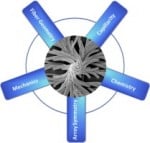
Grinthal, Alison; Kang, Sung Hoon; Epstein, Alexander K.; Aizenberg, Michael; Khan, Mughees; Aizenberg, Joanna
Steering Nanofibers: An Integrative Approach to Bio-Inspired Fiber Fabrication and Assembly Journal Article
In: Nano Today, vol. 7, pp. 35-52, 2012, (Invited Review).
Abstract | Links | BibTeX | Tags: Assembly, Bio-Inspired, bio-inspired science and engineering, Chemistry, Fabrication, Geometry, Hierarchical, Mechanics, Nanofiber, Symmetry
@article{Grinthal2012,
title = {Steering Nanofibers: An Integrative Approach to Bio-Inspired Fiber Fabrication and Assembly},
author = {Alison Grinthal and Sung Hoon Kang and Alexander K. Epstein and Michael Aizenberg and Mughees Khan and Joanna Aizenberg},
url = {http://www.sciencedirect.com/science/article/pii/S1748013211001411},
year = {2012},
date = {2012-02-01},
journal = {Nano Today},
volume = {7},
pages = {35-52},
abstract = {As seen throughout the natural world, nanoscale fibers exhibit a unique combination of mechanical and surface properties that enable them to wind and bend around each other into an immense diversity of complex forms. In this review, we discuss how this versatility can be harnessed to transform a simple array of anchored nanofibers into a variety of complex, hierarchically organized dynamic functional surfaces. We describe a set of recently developed benchtop techniques that provide a straightforward way to generate libraries of fibrous surfaces with a wide range of finely tuned, nearly arbitrary geometric, mechanical, material, and surface characteristics starting from a single master array. These simple systematic controls can be used to program the fibers to bundle together, twist around each other into chiral swirls, and assemble into patterned arrays of complex hierarchical architectures. The delicate balance between fiber elasticity and surface adhesion plays a critical role in determining the shape, chirality, and higher order of the assembled structures, as does the dynamic evolution of the geometric, mechanical, and surface parameters throughout the assembly process. Hierarchical assembly can also be programmed to run backwards, enabling a wide range of reversible, responsive behaviors to be encoded through rationally chosen surface chemistry. These strategies provide a foundation for designing a vast assortment of functional surfaces with anti-fouling, adhesive, optical, water and ice repellent, memory storage, microfluidic, capture and release, and many more capabilities with the structural and dynamic sophistication of their biological counterparts.},
note = {Invited Review},
keywords = {Assembly, Bio-Inspired, bio-inspired science and engineering, Chemistry, Fabrication, Geometry, Hierarchical, Mechanics, Nanofiber, Symmetry},
pubstate = {published},
tppubtype = {article}
}
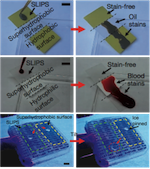
Aizenberg, Joanna; Aizenberg, Michael; Kang, Sung Hoon; Kim, Philseok; Tang, Kam Yan; Wong, Tak- Sing
Slippery Surfaces with High Pressure Stability, Optical Transparency, and Self-Healing Characteristics Technical Report
2012, (United States Patent 9,121,306 and 9,121,307).
Links | BibTeX | Tags: Anti-stiction, bio-inspired science and engineering, Coating, High Pressure, Ice-repellent, Oil-repellent, Optical Transparency, Self-Repair, Slippery
@techreport{Aizenberg2012b,
title = {Slippery Surfaces with High Pressure Stability, Optical Transparency, and Self-Healing Characteristics},
author = {Joanna Aizenberg and Michael Aizenberg and Sung Hoon Kang and Philseok Kim and Kam Yan Tang and Tak- Sing Wong},
url = {http://www.google.com/patents/US9121306},
year = {2012},
date = {2012-01-19},
note = {United States Patent 9,121,306 and 9,121,307},
keywords = {Anti-stiction, bio-inspired science and engineering, Coating, High Pressure, Ice-repellent, Oil-repellent, Optical Transparency, Self-Repair, Slippery},
pubstate = {published},
tppubtype = {techreport}
}
2011
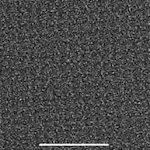
Kang, Sung Hoon; Wu, Ning; Grinthal, Alison; Aizenberg, Joanna
Meniscus Lithography: Evaporation-Induced Self-Organization of Pillar Arrays into Moiré Patterns Journal Article
In: Physical Review Letters, vol. 107, pp. 177802, 2011, (Selected as Physical Review Letters Editors’ Suggestion and Highlighted in Physics Today and Physics Synopsis. ).
Abstract | Links | BibTeX | Tags: Evaporation, Moire, Nanopillar, Self-Organization
@article{Kang2011,
title = {Meniscus Lithography: Evaporation-Induced Self-Organization of Pillar Arrays into Moiré Patterns},
author = {Sung Hoon Kang and Ning Wu and Alison Grinthal and Joanna Aizenberg},
url = {http://journals.aps.org/prl/abstract/10.1103/PhysRevLett.107.177802},
year = {2011},
date = {2011-10-20},
journal = {Physical Review Letters},
volume = {107},
pages = {177802},
abstract = {We demonstrate a self-organizing system that generates patterns by dynamic feedback: two periodic surfaces collectively structure an intervening liquid sandwiched between them, which then reconfigures the original surface features into moiré patterns as it evaporates. Like the conventional moiré phenomenon, the patterns are deterministic and tunable by mismatch angle, yet additional behaviors—chirality from achiral starting motifs and preservation of the patterns after the surfaces are separated—emerge uniquely from the feedback process. Patterning menisci based on this principle provides a simple, scalable approach for making a series of complex, long-range-ordered structures.},
note = {Selected as Physical Review Letters Editors’ Suggestion and Highlighted in Physics Today and Physics Synopsis. },
keywords = {Evaporation, Moire, Nanopillar, Self-Organization},
pubstate = {published},
tppubtype = {article}
}

Wong, Tak-Sing; Kang, Sung Hoon; Tang, Sindy. K. Y.; Smythe, Elizabeth J.; Hatton, Benjamin D.; Grinthal, Alison; Aizenberg, Joanna
Bioinspired Self-Repairing Slippery Surfaces with Pressure-Stable Omniphobicity Journal Article
In: Nature, vol. 477, pp. 443–447, 2011, (Image Credits: James C. Weaver and Peter Allen. Selected for 2012 R&D 100 Award. Featured on News & Views, highlighted in the issue of Nature and various media worldwide including BBC, the Times, Daily Mail, ABC (Australia & Spain), Discovery, Financial Times, Yahoo News (UK), Agence France-Presse, Sina (China), the Statesman (India), Nature Chemistry, Hot Topic Article in Nature Asia-Pacific, C&EN, AAAS EurekAlert, Chemistry World, Physics World, Spektrum Der Wissenschaft, New Scientist, and the Engineer).
Abstract | Links | BibTeX | Tags: Bio-Inspired, Omniphobic, Pressure-Stable, Self-Repair, Slippery, Surface
@article{Wong2011,
title = {Bioinspired Self-Repairing Slippery Surfaces with Pressure-Stable Omniphobicity},
author = {Tak-Sing Wong and Sung Hoon Kang and Sindy. K. Y. Tang and Elizabeth J. Smythe and Benjamin D. Hatton and Alison Grinthal and Joanna Aizenberg},
url = {http://www.nature.com/nature/journal/v477/n7365/full/nature10447.html},
year = {2011},
date = {2011-09-22},
journal = {Nature},
volume = {477},
pages = {443–447},
abstract = {Creating a robust synthetic surface that repels various liquids would have broad technological implications for areas ranging from biomedical devices and fuel transport to architecture but has proved extremely challenging1. Inspirations from natural nonwetting structures2, 3, 4, 5, 6, particularly the leaves of the lotus, have led to the development of liquid-repellent microtextured surfaces that rely on the formation of a stable air–liquid interface7, 8, 9. Despite over a decade of intense research, these surfaces are, however, still plagued with problems that restrict their practical applications: limited oleophobicity with high contact angle hysteresis9, failure under pressure10, 11, 12 and upon physical damage1, 7, 11, inability to self-heal and high production cost1, 11. To address these challenges, here we report a strategy to create self-healing, slippery liquid-infused porous surface(s) (SLIPS) with exceptional liquid- and ice-repellency, pressure stability and enhanced optical transparency. Our approach—inspired by Nepenthes pitcher plants13—is conceptually different from the lotus effect, because we use nano/microstructured substrates to lock in place the infused lubricating fluid. We define the requirements for which the lubricant forms a stable, defect-free and inert ‘slippery’ interface. This surface outperforms its natural counterparts2, 3, 4, 5, 6 and state-of-the-art synthetic liquid-repellent surfaces8, 9, 14, 15, 16 in its capability to repel various simple and complex liquids (water, hydrocarbons, crude oil and blood), maintain low contact angle hysteresis (<2.5°), quickly restore liquid-repellency after physical damage (within 0.1–1 s), resist ice adhesion, and function at high pressures (up to about 680 atm). We show that these properties are insensitive to the precise geometry of the underlying substrate, making our approach applicable to various inexpensive, low-surface-energy structured materials (such as porous Teflon membrane). We envision that these slippery surfaces will be useful in fluid handling and transportation, optical sensing, medicine, and as self-cleaning and anti-fouling materials operating in extreme environments.},
note = {Image Credits: James C. Weaver and Peter Allen.
Selected for 2012 R&D 100 Award.
Featured on News & Views, highlighted in the issue of Nature and various media worldwide including BBC, the Times, Daily Mail, ABC (Australia & Spain), Discovery, Financial Times, Yahoo News (UK), Agence France-Presse, Sina (China), the Statesman (India), Nature Chemistry, Hot Topic Article in Nature Asia-Pacific, C&EN, AAAS EurekAlert, Chemistry World, Physics World, Spektrum Der Wissenschaft, New Scientist, and the Engineer},
keywords = {Bio-Inspired, Omniphobic, Pressure-Stable, Self-Repair, Slippery, Surface},
pubstate = {published},
tppubtype = {article}
}
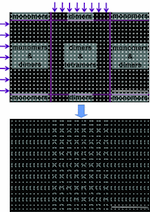
Seminara, Agnese; Pokroy, Boaz; Kang, Sung Hoon; Brenner, Michael P.; Aizenberg, Joanna
On the Mechanism of Nanostructure Movement under Electron Beam and Its Application in Patterning Journal Article
In: Physical Review B, vol. 83, pp. 235438, 2011.
Abstract | Links | BibTeX | Tags: Actuation, Electron Beam, Electrostatic, Nanopillar, Patterning
@article{Seminara2011,
title = {On the Mechanism of Nanostructure Movement under Electron Beam and Its Application in Patterning},
author = {Agnese Seminara and Boaz Pokroy and Sung Hoon Kang and Michael P. Brenner and Joanna Aizenberg},
url = {http://journals.aps.org/prb/abstract/10.1103/PhysRevB.83.235438},
year = {2011},
date = {2011-06-30},
journal = {Physical Review B},
volume = {83},
pages = {235438},
abstract = {In electron microscopy, the motion of the sample features due to the interaction with the electron beam has been traditionally regarded as a detrimental effect. Uncontrolled feature displacement produces artifacts both in imaging and patterning, limiting the resolution and distorting precise nanoscale patterns. The mechanism of such motion remains largely unclear. We present an experimental study of e-beam-induced nanopost movement and offer a mechanistic theoretical model that quantitatively explains the physical phenomenon. We propose that e-beam bombardment produces an uneven distribution of electrons in the sample, and the resulting electrostatic interactions provide forces and torques sufficient to bend the nanoposts. We compare the theoretical predictions with a series of controlled experiments that support our model. We take advantage of this theoretical understanding to demonstrate how this generally undesirable effect can be turned into an unconventional e-beam writing technique to generate pseudo-three-dimensional structures.},
keywords = {Actuation, Electron Beam, Electrostatic, Nanopillar, Patterning},
pubstate = {published},
tppubtype = {article}
}
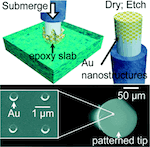
Lipomi, Darren J.; Martinez, Ramses V.; Kats, Mikhail A.; Kang, Sung Hoon; Kim, Philseok; Aizenberg, Joanna; Capasso, Federico; Whitesides, George M.
Patterning the Tips of Optical Fibers with Metallic Nanostructures Using Nanoskiving Journal Article
In: Nano Letters, vol. 11, pp. 632–636, 2011.
Abstract | Links | BibTeX | Tags: Metallic, Nanoskiving, Nanostructure, Optical Fiber, Patterning
@article{Lipomi2010,
title = {Patterning the Tips of Optical Fibers with Metallic Nanostructures Using Nanoskiving},
author = {Darren J. Lipomi and Ramses V. Martinez and Mikhail A. Kats and Sung Hoon Kang and Philseok Kim and Joanna Aizenberg and Federico Capasso and George M. Whitesides},
url = {http://pubs.acs.org/doi/abs/10.1021/nl103730g},
year = {2011},
date = {2011-01-04},
journal = {Nano Letters},
volume = {11},
pages = {632–636},
abstract = {Convenient and inexpensive methods to pattern the facets of optical fibers with metallic nanostructures would enable many applications. This communication reports a method to generate and transfer arrays of metallic nanostructures to the cleaved facets of optical fibers. The process relies on nanoskiving, in which an ultramicrotome, equipped with a diamond knife, sections epoxy nanostructures coated with thin metallic films and embedded in a block of epoxy. Sectioning produces arrays of nanostructures embedded in thin epoxy slabs, which can be transferred manually to the tips of optical fibers at a rate of approximately 2 min−1, with 88% yield. Etching the epoxy matrices leaves arrays of nanostructures supported directly by the facets of the optical fibers. Examples of structures transferred include gold crescents, rings, high-aspect-ratio concentric cylinders, and gratings of parallel nanowires.},
keywords = {Metallic, Nanoskiving, Nanostructure, Optical Fiber, Patterning},
pubstate = {published},
tppubtype = {article}
}
2010

Kang, Sung Hoon; Pokroy, Boaz; Mahadevan, L.; Aizenberg, Joanna
Control of Shape and Size of Nanopillar Assembly by Adhesion-Mediated Elastocapillary Interaction Journal Article
In: ACS Nano, vol. 4, pp. 6323–6331, 2010, (Featured on the cover and highlighted in the issue.).
Abstract | Links | BibTeX | Tags: Adhesion, bio-inspired science and engineering, Elastocapillary, Evaporation, Nanopillar, Patterning, Self-Organization
@article{Kang2010,
title = {Control of Shape and Size of Nanopillar Assembly by Adhesion-Mediated Elastocapillary Interaction},
author = {Sung Hoon Kang and Boaz Pokroy and L. Mahadevan and Joanna Aizenberg},
url = {http://pubs.acs.org/doi/abs/10.1021/nn102260t},
year = {2010},
date = {2010-11-01},
journal = {ACS Nano},
volume = {4},
pages = {6323–6331},
abstract = {Control of self-organization of nanofibers into regular clusters upon evaporation-induced assembly is receiving increasing attention due to the potential importance of this process in a range of applications including particle trapping, adhesives, and structural color. Here we present a comprehensive study of this phenomenon using a periodic array of polymeric nanopillars with tunable parameters as a model system to study how geometry, mechanical properties, as well as surface properties influence capillary-induced self-organization. In particular, we show that varying the parameters of the building blocks of self-assembly provides us with a simple means of controlling the size, chirality, and anisotropy of complex structures. We observe that chiral assemblies can be generated within a narrow window for each parameter even in the absence of chiral building blocks or a chiral environment. Furthermore, introducing anisotropy in the building blocks provides a way to control both the chirality and the size of the assembly. While capillary-induced self-assembly has been studied and modeled as a quasi-static process involving the competition between only capillary and elastic forces, our results unequivocally show that both adhesion and kinetics are equally important in determining the final assembly. Our findings provide insight into how multiple parameters work together in capillary-induced self-assembly and provide us with a diverse set of options for fabricating a variety of nanostructures by self-assembly.},
note = {Featured on the cover and highlighted in the issue.},
keywords = {Adhesion, bio-inspired science and engineering, Elastocapillary, Evaporation, Nanopillar, Patterning, Self-Organization},
pubstate = {published},
tppubtype = {article}
}

Pokroy, Boaz; Aichmayer, Barbara; Schenk, Anna S.; Haimov, Boris; Kang, Sung Hoon; Fratzl, Peter; Aizenberg, Joanna
Sonication-Assisted Synthesis of Large, High-Quality Mercury-Thiolate Single Crystals Directly from Liquid Mercury Journal Article
In: Journal of the American Chemical Society, vol. 132, pp. 14355–14357, 2010, (Highlighted on C&EN.).
Abstract | Links | BibTeX | Tags: Crystal, Mercury Thiolate, Single Crystal, Sonication, Synthesis
@article{Pokroy2010,
title = {Sonication-Assisted Synthesis of Large, High-Quality Mercury-Thiolate Single Crystals Directly from Liquid Mercury},
author = {Boaz Pokroy and Barbara Aichmayer and Anna S. Schenk and Boris Haimov and Sung Hoon Kang and Peter Fratzl and Joanna Aizenberg},
url = {http://pubs.acs.org/doi/abs/10.1021/ja1056449},
year = {2010},
date = {2010-09-27},
journal = {Journal of the American Chemical Society},
volume = {132},
pages = {14355–14357},
abstract = {The synthetic formation of mercury thiolates has been known for almost 200 years. These compounds are usually formed by a slow reaction of mercury salts with thiolates or disulfides to produce small (up to 1 μm), plate-like crystals of Hg(S-R)2. Herein we show that such mercury thiolates can be formed directly from liquid mercury via sonication with neat thiols. The process not only produces crystals very rapidly (within seconds) but also leads to the formation of large crystals (up to hundreds of micrometers). The high quality of these crystals enabled their detailed structural characterization, which showed that the crystals are composed of ordered Hg(thiol)2 stacks. We extended the experimental procedure to form and characterize a range of Hg thiolate crystals with various chain lengths. We propose a new self-assembly mechanism that can explain how sonication—which is usually used to break chemical bonds, to disperse materials, and to form nanosized crystallites—may lead to the growth of large, high-quality crystals.},
note = {Highlighted on C&EN.},
keywords = {Crystal, Mercury Thiolate, Single Crystal, Sonication, Synthesis},
pubstate = {published},
tppubtype = {article}
}